Hamilton and District Apartment Association (HDAA)
Hamilton's landlord licensing pilot project not proceeding as the city expected.
London Property Management Association (LPMA)
Small landlords are losing their livelihoods as LTB backlog grows

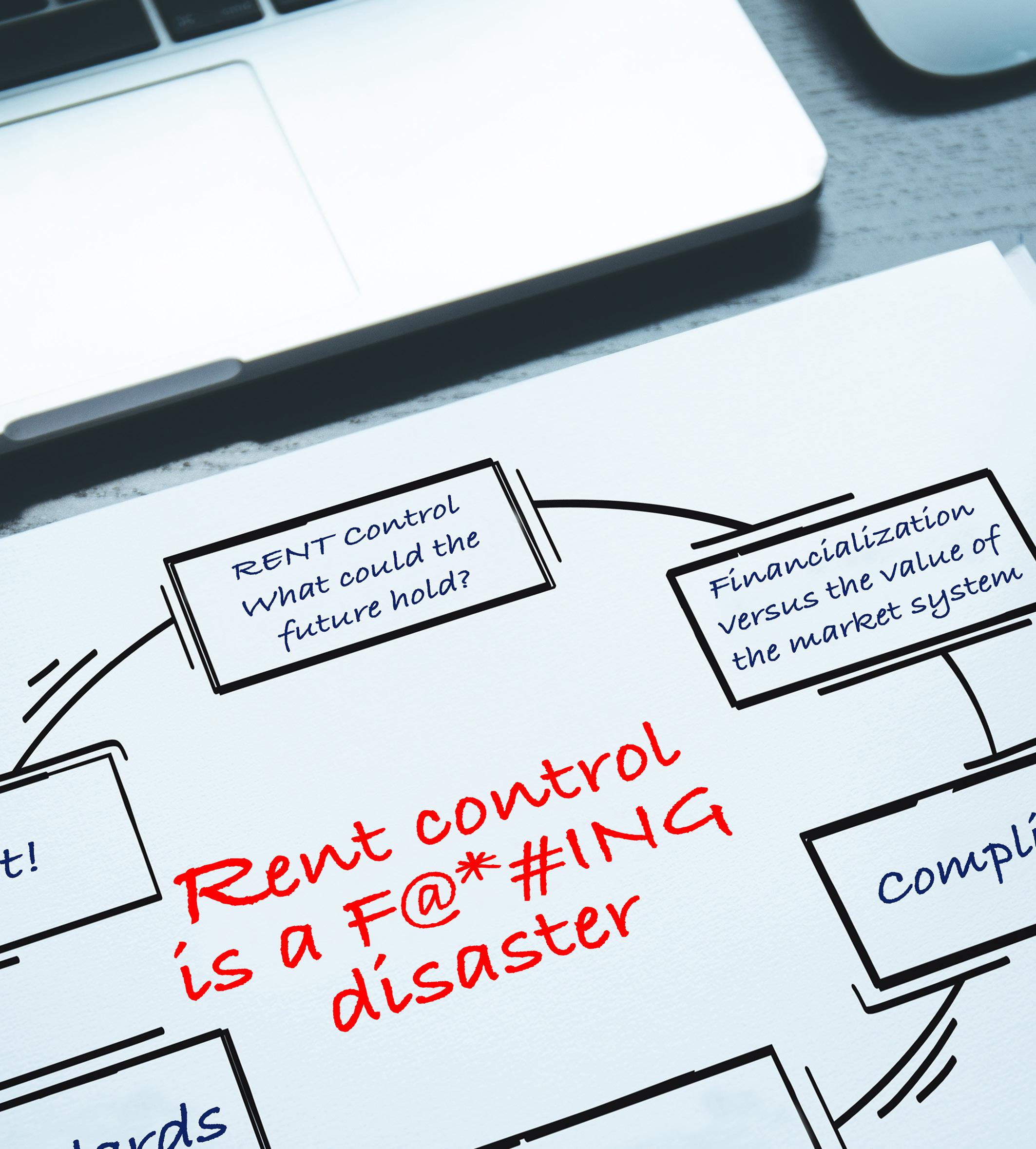
Eastern Ontario Landlord Organization (EOLO)
Ottawa City Council approved a new Vacant Unit Tax
The official publication of: Canada’s #1 most widely read publication for Apartment Owners, Managers and Association Executives Vol. 15 No. 5 January 2023
Keep
• Revolutionize the prospect journey by automating the entire lead-to-lease cycle
• Enrich the resident experience with a comprehensive service portal

• In crease conversions with dynamic and integrated websites and internet listings
• O ptimize your online presence and attract more prospects with SEO and PPC advertising
Learn
connected when it matters the most by safely attracting prospects, converting quality leads and supporting residents. A single
management.
business moving:
Stay
connected solution for Canadian multifamily marketing
(888) 569-2734 | Yardi.com/RentCafe ©2023 Yardi Systems, Inc All Rights Reserved. Yardi, the Yardi logo, and al Yardi product names are trademarks of Yardi Syst ems, Inc.
with us at Yardi.com/ Webinars


Project Management | Building Science | Structural Engineering | Roofing Surveys | Condition Assessments | Asbestos and Mould Surveys 1.888.348.8991 McIntoshPerry.com We’ve encountered every possible building-related issue over our five decades of history. With more than 500 engineers, project managers and technical experts across the country, we provide a full range of services to the rental housing industry.
EDITOR’S NOTES
Another year is here
The calendar has flipped to 2023. But it seems like not a lot has changed. Or perhaps we’re just exhausted by everything we’ve gone through. The constant bad news – both personal and societal – can wear you down. For many, January 1 is just another day. But the beginning of a new year is an incentive to change something and look at the situation with fresh eyes. Take this opportunity to do something different. A small change can produce significant results.
This issue of RHB Magazine features a deep dive into rent control and how it has failed everyone – tenants, rental property owners, homeowners, the government, and society. We looked at the data and analysis from a San Francisco study, summarized the results of a CMHC-funded study of Canadian markets, and discussed the negative consequences of rent control.
The second article examines the impact of rental property owners’ motives to realize profit in a larger context, disputing the claims the financialization of housing is to blame for the shortfalls in individuals’ rights to adequate housing. It also looks at the data related to Canada’s homelessness problem. The third article is an editorial on rent control, written by John Dickie of the CFAA, discussing the issues related to rent control and its potential future.
Don't forget to read CFAA’s newsletter, National Outlook, as well as the Regional Association Voice. FRPO discusses its efforts to engage with various government ministries and officials to collaborate and support the Ford government in building more housing. Yardi Canada wraps up this issue with a discussion of investment management technology.
We enjoy hearing from our readers, and we want to support two-way communication. If you have any comments or questions, send them to david@rentalhousingbusiness.ca. I look forward to your emails.
Publisher Marc Côté marc@rentalhousingbusiness.ca
Associate Publisher
Nishant Rai
Editorial David Gargaro david@rentalhousingbusiness.ca
Contributing Editor
John Dickie, President CFAA jdickie@rentalhousingbusiness.ca
Creative Director / Designer
Scott Clark
Photography
Noah Goldentuler
Sales Executive
Justin Kreslin
Office Manager
Geeta Lokhram
Subscriptions
One year $49.99 Cdn
Two years $79.99 Cdn
Single copy sales $9.99 Cdn
Opinions expressed in articles are those of the authors and do not necessarily reflect the views and opinions of the CFAA Board or management. CFAA and RHB Inc. accept no liability for information contained herein. All rights reserved. Contents may not be reproduced without the written permission from the publisher.
P.O. Box 696, Maple, ON L6A 1S7 416-236-7473
Produced in Canada
David Gargaro Senior Editor
All contents copyright © RHB Inc. Canadian Publications Mail Product Sales Agreement No. 42652516

the issue!
Enjoy
4 | January 2023




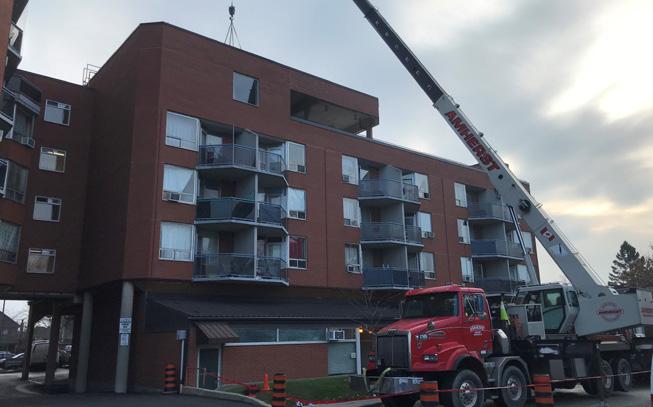
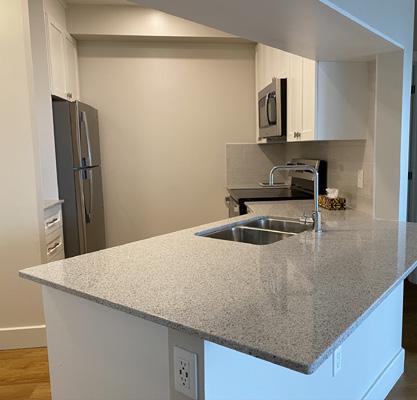
We hope to partner with you today... ...to build for a SOLID tomorrow Emergency Response | Disaster Restoration | Suite Upgrades | Capital Improvements | New Development Montreal | Ottawa | Toronto | Edmonton | Calgary | Vancouver | Victoria 66 Leek Crescent, Richmond Hill, ON, L4B 1H1 info@solidgc.ca (905) 470-0707 solidgc.ca





6 | January 2023 47 Regional Association Voice RHB’s forum for rental housing associations to share news, events and industry information The Member Associations Hot Topics: HDAA discusses the status of the licensing pilot project in Hamilton, and recalls key tips from its most recent Dinner Meeting on dealing with the LTB. pg. 49 LPMA discusses how small landlords are being negatively impacted by the LTB backlog and what the government has been doing to address the issues. pg. 53 EOLO discusses the City of Ottawa's new Vacant Unit Tax and its housing spending. pg. 57 IPOANS discusses its advocacy efforts, Nova Scotia's unsustainable growth strategy, the RTA, and the association's education efforts. pg. 61 Rent control is a F@*#ING disaster Rent control is having the opposite effect of its desired intent. Financialization versus the value of the market system There is no financial sense in removing profit from the rental housing sector. Final Take Away Investment management tech for a stronger 2023 Prepare your real estate tech stack to run it as efficiently as possible. RAV features the latest industry news from four member associations. Rent control. What could the future hold? Can changes be made so deserving tenants receive more protection but the negative consequences of rent control are minimized? CONTENTS VOL.15 NO.5 2023 64 30



Luxer One has 15+ years of experience providing industry leading Parcel Locker solutions. Coinamatic is a proud Canadian Distributor of Luxer One parcel delivery lockers. www.coinamatic.com | 1.877.755.5302 | info@coinamatic.com CONTACT US! MADE IN NORTH AMERICA USER FRIENDLY APPLE IPAD TOUCHSCREEN UL CERTIFIED 12-GAUGE STEEL The Future of Package Management! User Friendly Self Service 24/7 Package Access Eliminates constant staff disruption for deliveries Officially approved by Canadian Carriers Robust Lockers designed and built in USA 6-8 week delivery timeline Over 200,000,000 parcels delivered to Luxer One lockers
PRESIDENT’S CORNER
This issue of RHB Magazine addresses rent control. Across Canada, tenant advocates are calling for tighter rent control to apply in more situations. More extreme advocates want to drive the profit motive out of rental housing entirely. At page 24, the authors address the benefits of markets and the profit motive, and how they have enabled our current much improved economic conditions, from which everyone benefits.
At page 35, in National Outlook, CFAA addresses the right to housing: what it means, how rental housing providers support it, and ways to support the right to housing that can mesh with what the rental housing industry does, and wants to do. (The right to housing is two-edged. ACORN and other tenant advocates try to use it to attack rental housing. CFAA lays out arguments that supporting rental housing development and re-development is the only realistic way to achieve greater realization of the right to housing.)

All of this is of immediate and critical interest because rental demand is hot, and rent increases on turnover are high, especially in BC and Ontario. CFAA is working with rental marketing platforms (which provide rental data) to seek to mitigate the effects of reports of dramatic rent increases on the industry’s political situation.
CFAA-Rental Housing Conference 2023 will be held in Halifax from Wednesday, June 14 to Friday, June 16, 2023! Registration is open. Early bird rates are available until Feb 28. Please plan to attend. See page 39 for more information.
The CFAA Rental Housing Awards program should also be open for application when you read this. The deadline to apply is March 10. See page 40 for more information.
The Home Depot remains a CFAA Strategic Partner. By registering your membership
in CFAA (either directly or through one of CFAA’s 13 member associations) with Home Depot Pro, you benefit yourself and CFAA. This partnership benefits every rental housing provider reading this magazine.
Yardi Systems is another long-standing CFAA Strategic Partner. As well as receiving Yardi’s help with rent information, we look forward to working with Yardi to bring you informative panels, and the latest and best information on technology and marketing for rental housing providers, at CFAA-RHC 2023 in Halifax. If you are not already a direct member of CFAA, please consider joining CFAA as a Direct Rental Housing Provider Member, or a Suppliers Council Member. Visit www. cfaa-fcapi.org or e-mail admin@cfaafcapi.org today!
8 | January 2023
John Dickie, CFAA President

In this issue of... NATIONAL OUTLOOK
35. The National Housing Council is consulting on the impact of “financialization” on tenants’ right to housing in Canada’s private rental market. What is the right to housing? What do rental housing providers do already? How can the industry respond to this new pressure?
Corporation des Propriétaires Immobiliers du Québec (CORPIQ) www.corpiq.com

P: 514-748-1921
Eastern Ontario Landlord Organization (EOLO) www.eolo.ca
P: 613-235-9792
Federation of Rental-housing Providers of Ontario (FRPO) www.frpo.org
P: 416-385-1100, 1-877-688-1960
Greater Toronto Apartment Association (GTAA) www.gtaaonline.com
P: 416-385-3435
38. CFAA is holding Rental Housing Conference 2023 from Wednesday, June 14 to Friday, June 16. Where will CFAARHC 2023 take place? What topics will be explored? Who is to be the keynote speaker?

Hamilton & District Apartment Association (HDAA) www.hamiltonapartmentassociation.ca
P: 905-632-4435
Investment Property Owners Association of Nova Scotia (IPOANS) www.ipoans.ns.ca
P: 902-425-3572
LandlordBC www.landlordbc.ca
P: 1-604-733-9440
Vancouver Office P: 604-733-9440
Victoria Office P: 250-382-6324
41. The CFAA Rental Housing Awards for 2023 are now open What are the awards categories? Who can enter? What is the deadline for applications? When and where will the winners will be announced?
To subscribe to CFAA’s e-Newsletter, please send your email address to communication@cfaa-fcapi.org.
The Canadian Federation of Apartment Associations represents the owners and managers of close to one million residential rental suites in Canada, through 13 apartment associations and direct landlord memberships across Canada.

CFAA is the sole national organization representing the interests of Canada’s $950 billion rental housing industry.
For more information about CFAA itself, see www.cfaa-fcapi.org or telephone 613-235-0101.
London Property Management Association (LPMA) www.lpma.ca
P: 519-672-6999
New Brunswick Apartment Owners Association (NBAOA) www.nbaoa.ca
jbrealsetate@nb.aibn.com
Manufactured Home Park Owners Alliance of British Columbia (MHPOA) www.mhpo.com
P: 1-877-222-4560
Professional Property Managers’ Association (of Manitoba) (PPMA) www.ppmamanitoba.com
P: 204-957-1224
Saskatchewan Landlord Association Inc. (SKLA) www.skla.ca
P: 306-653-7149
Waterloo Regional Apartment Management Association (WRAMA)
www.wrama.com
P: 519-748-0703
10 | January 2023
CFAA Member Associations


Average rent for a 2-bedroom by province: 2 1 4 3 5 British Columbia - $1,566 Alberta - $1,254 Ontario - $1,465 Nova Scotia - $1,255 Manitoba - $1,266 Saskatchewan
$1,117 source: 2022 National Edition theAnnual 6
-


Tenant advocacy groups often claim that rent control legislation is essential for ensuring rental housing remains affordable for those who need it most. Proponents of rent control state that rental property owners should not be able to increase rents when tenants move out or to keep up with inflation. They want the government to implement rent control policies to protect financially disadvantaged groups from having to pay market rents.
However, according to research, rent control policies are disadvantageous to renters over the long run, as they lead to higher market rents and less housing supply. The legislation also negatively impacts rental property owners and the surrounding neighbourhoods. When all is said and done, rent control has the opposite effect of its designed intent.

14 | January 2023
What is rent control?
Rent control (or rent stabilization) refers to legislation that limits rental rates in a city, province or region. Although rent control legislation varies by jurisdiction, rent control generally sets a limit on the maximum rent that can be charged for a unit, as well as how much the rent can be increased per year. Rent control policies are designed to enable governments to regulate the housing market.
The most basic goal of rent control is to establish and maintain a base of affordable rental housing for lower-income tenants. The city, province or region sets guidelines that determine how much the rent can be increased at any given time. While rent control policies vary by province, they typically include three, four or five main types of rules:
• Frequency limits: How often rent can be increased (e.g., once every 12 months)
• Increase limits: The amount by which rent can be increased (e.g., 2%)
• Vacancy decontrol: The ability to re-rent a unit at the market rate once a tenant moves out

• An exemption for new rental units for a period of time after their construction
• An exemption for rental units renting for more than a certain amount (as in Manitoba)
In Canada, British Columbia, Manitoba, Ontario, and Prince Edward Island have rent control; the other provinces and territories have their own rules for how and when rent can be increased. In BC, the rent increase is tied to the inflation rate. In Manitoba and Ontario, the rent can increase according to the amount set under the annual rent increase guideline, as determined by the province’s Consumer Price Index (CPI). In PEI, the Island Regulatory and Appeals Commission sets the annual allowable percentage by which rent can be increased (although the government overrode the Commission for 2023).
The ”benefits” of rent control
Advocates often declare rent control offers three key benefits for tenants. First, rent-controlled properties have lower-than-market rents, so they are more affordable for lower-income tenants. Rent control ensures that rents do not increase faster than wages, especially in large cities.
Second, rent control prevents people from being “unfairly” displaced from their homes. The elderly and financially disadvantaged can remain in their homes, especially in areas where market
rentalhousingbusiness.ca | 15
rents are higher than they can afford. And third, rent control reduces turnover, which helps to maintain neighbourhood stability and strengthens community ties. This means people can live where they want for as long as they want.
Proponents of rent control often discuss these benefits in general terms. However, they rarely provide statistics or research to back up these claims, relying instead on specific situations that support their statements. They also look at the positives of rent control in a vacuum, ignoring issues like inflation and the overall economy’s impact on increasing rents.
Those who support rent control also ignore its drawbacks. Rent control reduces rental property owners’ financial ability to meet their maintenance expenses. This affects the quality of the building and living conditions, which has a negative impact on every tenant in the building. Rental property owners are more likely to sell their rental properties or convert them into condos, which reduces the amount of rental stock. Developers are also less likely to invest in building new rental stock, since they cannot earn sufficient income from their investment. This reduces the number of new rental properties available on the market, leading to higher rents due to lower supply.
Statistics tell a more complete story
Economists Rebecca Diamond, Timothy McQuade, and Franklin Qian conducted extensive research on the effects of rent control in San Francisco, which is well known for its high housing and rental costs. They published their results in a paper entitled “The Effects of Rent Control Expansion on Tenants, Landlords, and Inequality: Evidence from San Francisco.” The findings demonstrated that rent control is not as beneficial to tenants (or anyone else) as tenant advocates would have you believe.
San Francisco followed the example of other North American cities in the 1970s by imposing rent control in 1979 on all standing buildings that had five or more units. New construction and smaller multi-family buildings were exempt from rent control. However, the city removed the exemption in 1994. The authors used this change to compare the newly rent-controlled buildings to other buildings in San Francisco that were not affected by the change in legislation.
The report states that tenants in rent-controlled buildings stayed in their buildings longer than tenants living in non-rent-controlled buildings. Between five and ten years after the change in
legislation, tenants in rent-controlled buildings were, on average, 3.5 percentage points more likely to remain in their unit relative to other tenants. Only 18 per cent of the control group were still living in their 1994 address, which equals a 19.4 per cent increase in tenants not moving relative to the control group. Tenants in rent-controlled buildings were also 4.5 percentage points more likely to stay in San Francisco when compared to the control group.
This means a significant percentage of renters who continued to live in their 1994 address because of rent control would have left their rental properties if they were not under rent control. Advocates of rent control would likely claim this is the best outcome for tenants. However, this also reduces mobility to other housing over time and reduces apartment supply for those who most need it.
Mobility is an essential component of a healthy rental housing ecosystem. Under ideal circumstances, renters should move to different apartments when their needs change over time. In the absence of rent control, lower-priced rental units are also made available to young renters, immigrants, and retirees looking for smaller, more affordable accommodations. Rent control keeps tenants in specific rental units longer than normal, which affects those living there, and those who need the accommodations.
Rental property owners responded to rent control measures as one would expect. Over time, they shifted their resources to other real estate options, such as converting their properties to condominiums, which are exempt from rent control in San Francisco. They also sold their properties to owner-occupants. This resulted in a 15 per cent decrease in the rental housing supply. Converting rental properties to higher-end condos attracted more higher-income people to the San Francisco area, which led to more income inequality and reduced the mobility of lowerincome tenants in rent-controlled properties.
The report demonstrates that rent control forced more lower-income people to move out of their preferred neighbourhoods. Rather than staying within their established communities, tenants were left with few rental housing options, often having to move to lower-income neighbourhoods with fewer employment opportunities and lower education levels.
16 | January 2023 continued on page 20
"[Rent control] resulted in a 15 per cent decrease in the rental housing supply."
Future-proof your laundry.



Learn


more about our mobile and cashless bundles and other digital laundry room solutions.
your residents happy with Coinamatic’s digital laundry room solutions.
the Coinamatic digital laundry room mobile app + card bundle, residents get their choice of easy-to-use mobile or laundry card payment.
Keep
With
Mobile App + Laundry Card Bundle
Impact of rent control on rents and turnover rates
 By John Dickie, CFAA President
By John Dickie, CFAA President
Rent control imposes a long lag on rents catching up with housing costs and values. Rent control also concentrates the increases in rents on unit that turn over, which means turnover rents exceed the rents that would apply across the rental market if there were no rent control.


18 | January 2023
Increase in in-place rents for the 12
–
increase
Source: Yardi Canada 0.0% 1.0% 2.0% 3.0% 4.0% 5.0% 6.0% 7.0% 8.0% 9.0% Halifax MontrealOttawa-Gatineau Toronto Hamilton KCW London Winnipeg Vancouver Calgary Edmonton Canada Rent and CPI Increases in Canada Rent Increase CPI increase Rent Controlled Markets No Rent Controls Delivered to you by
months to Q4
2022 compared with the
in the Consumer Price Index


CONTACT US! info@snaile.com or visit www.snailelockers.com for contactless and secure resident delivery information MULTI-RESIDENTIAL | RETAIL | OFFICE | SCHOOL CAMPUS | www.snailelockers.com MANAGING RESIDENT DELIVERIES WHY SNAILE CANADA? Scan QR Code to find out! CERTIFIED DATAHOSTED INCANADA SERVICING NAC A D AN DATA SECURITY PRIVACYLAWS PROC E D SERU C ANADIANCARRIERSDELIVE R CONTRACTS INFORCE PROTECTED BY PIPEDALAW S CANADIAN TOWNS+CITIES55 + OEM $ 9/10 SERVICING LARGEST CANADIAN BUILDING OWNERS CANADIAN CYBER INSURANCE POLICY MADE IN CANADA INTEGRATED WITHYOURBUILDING SSOFTWAR E API ISO/IEC 27001 PRICE MATCH GUARANTEED PROTECTED BY CANADIAN ELECTRICAL CODE CSA C22. 1 FIRE RATED CAN/ULCS102 ORIGINAL EQUIPMENT MANUFACTURER NOT A RESELLER ICKETIN UP TO 355x LESS ² CO EROM VNE I R ONMENTALLY FRIENDLY
Rent control prevents people from moving into the city. This is a significant issue for younger people looking to live where jobs are located. With fewer rental properties available, there was less rental housing supply. Rents also increased in San Francisco during this time. According to the report, the rent control policy increased rents in the city by 5.1 per cent over what they would have been without rent control, which is significant where housing costs are already high.
Empirical evidence from CMHC
In November 2020, KPMG conducted a study on rent control on behalf of CMHC to help provide a better understanding how it impacts housing affordability issues. It examined regulatory changes to rent controls and analyzes how the policies affected rental markets, including rental prices and the number of rental starts.
KPMG’s study analyzed Toronto, Vancouver, Montreal, and Winnipeg, using Calgary and Halifax as the control group (since Alberta does not have rent control and Nova Scotia did not at the time of the study). The study looked at the period from 1971 to 2019. The analysis focused on three key topic areas:
• The introduction to rent controls in several jurisdictions and a review of the literature on the impacts of rent controls
• A statistical analysis of rental market data, including comparisons of rent control and no rent control markets, correlation analyses, and a high-level difference-in-difference analysis
• Regression analyses to evaluate the impacts of tenancy deregulation (i.e., vacancy decontrol, or the ability of rental property owners to raise rents between tenancies) and new unit exemptions (i.e., newly built rental units are exempt from rent control for a set period of time)
According to the literature review, rent control did result in lowering prices for rent-controlled units. However, rent control also resulted in reduced rental supply due to the imposition of limits on rent prices, as well as the resulting effects on rental property valuations.
Statistical analysis of the Census Metropolitan Centres (CMCs) determined that rental prices were better able to respond to market supply and demand changes in markets without rent control. Rental prices also appeared to vary more under less strict rent control policies, specifically those that included tenancy deregulation.
Regression analysis determined that new unit exemption policies were correlated to an increase
in average rents. This is most likely because these policies typically cause an increase in the number of new, uncontrolled units in the rental price index. This means there is more rental supply available, which is a positive result. There was also a correlation between tenancy deregulation policies and a decrease in the rental supply, although that is primarily due to the presence of rent controls. Rent control policies tend to limit property developers’ return on investment, which negatively affects the supply of new rental housing stock.
Understanding the effects of rent control
Rent control effectively locks tenants into their apartments. The San Francisco report shows that tenants stay in their units longer than they would have if the units were not rent controlled. This means they don’t move out when their housing needs change (e.g., getting married, having a child, children move out). This also means people who would benefit from living in these apartments will have to live somewhere else less appropriate for their needs (e.g., too small, more expensive).
The San Francisco study showed that rent control increased income inequality in the city. Rent control prevented displacement of the original 1994 group of tenants from San Francisco in the short run, particularly among minorities. However, eight years after the law changed, only 4.5 per cent of tenants under rent control were able to remain in the city, with this percentage decreasing over time. Over the long run, rental property owners substituted housing types that were exempt from rent control price caps, which upgraded the housing stock and lowered the supply of rent-controlled housing. As a result, the average rent-controlled property has higher income residents than comparable market rate

20 | January 2023 continued from page 16
"...rent control policy increased rents in the city by 5.1 per cent over what they would have been without rent control."

properties. This offset the effect of keeping lowerincome tenants in the city as they were replaced with above-average income tenants.
Rent control also treated tenants living in the city differently than tenants who were moving into (or planning to move) to the city. Tenants who were already living in San Francisco and had access to rent control following the law change were better off due to their preference to stay in rentcontrolled units. However, this negatively affected future renters in San Francisco, who must pay higher rents due to the lack of rental supply. Rent control legislation created economic well-being inequality between current and future renters in San Francisco.
The proponents of rent control are almost always those who are currently better off because they are living in rent-controlled units. Cities like San Francisco, which have a high percentage of renters, will often vote in favour of keeping these policies. However, future renters cannot vote on the issue and end up paying the related costs of rent control.
Rent control affects the quality of the surrounding neighbourhood. Areas with many rent-controlled buildings tend to have lower house prices, lower median incomes, lower education levels, and higher unemployment rates. Houses in rentcontrolled areas tend to sell for less. Some of this is due to the fact that rent-controlled properties are not as well maintained. With prices depressed across the board, and less movement of people into and out of the area, there is greater likelihood of overall depression on home prices and rents.
Let’s take a look at what happened in Cambridge, Massachusetts, where rent control was eliminated in 1994. Prior to the removal of rent control, controlled units rented for more than 40 per cent below the price of non-rent-controlled units. When rent control was removed, the market value of the decontrolled properties increased by 45 per cent.
There was an even greater impact on Cambridge’s housing stock. From 1994 to 2004, the surrounding property values increased by $2.0 billion. However, only $300 million came as a direct effect of decontrol on the previously controlled units. There was a greater increase in the value of properties near rent-controlled buildings than properties in non-rent-controlled areas (or with fewer rent-controlled buildings). And while rents increased when rent control was removed, there was a greater increase in the value of the homes, which means the surrounding neighbourhoods were more affected by rent control than the rental properties.
Rental property owners tend to respond to rent control by converting their properties to condos or redeveloping their properties to escape rent control. This has served to reduce the amount of available affordable rental housing, as well as attracting higher income individuals to newly converted properties. The result is increasing gentrification and higher income inequality, which goes against the goal of rent control.
Other rental property owners chose to accept rent control regulation but economized on property maintenance or upgrades, allowing building quality to decline. This was a direct result of restrictions on removing units from the rental stock. In addition to keeping rents low, as well as building quality, it served to depress the values of the surrounding properties.
Take a look at Ontario, where older buildings (built pre-1991) were subject to rent control. Premier Wynne’s government repealed this exemption, then Premier Ford’s government brought in a new exemption for buildings constructed after 2018. Older properties are less likely to be upgraded at the same level as non-rent-controlled properties due to the lack of incentive to invest in repairs, as rental property owners cannot increase rents to adequately recoup their investments. Tenants are less likely to move out, as they would want to keep their below-market rents, so rental providers have less incentive to invest in the buildings to attract new tenants.
Conclusion
Rent control does make rental housing more affordable for tenants over the short run. However, over the long term, rent control decreases the amount of rental stock, which tends to makes existing rental properties less available and less affordable. Rent control promotes gentrification and negatively impacts surrounding neighbourhoods. Imposing rent control on rental property owners for the purpose of restricting increases in rent is also counterproductive. Allowing the market to determine rents, as well as implementing social assistance supports for lower-income tenants, would be more effective in keeping housing affordability in check, supporting a healthy rental stock, and ensuring more equitable treatment for all tenants.
22 | January 2023
"When rent control was removed, the market value of the decontrolled properties increased by 45 per cent."
Dynamic Visual Marketing Solutions


Maximize your leasing potential with immersive pre-development digital marketing and innovative media capture technology.
Unlock The Full Potential of Your Parking Assets
Gain control and oversight over your parking operations with GrydPark, the tech suite designed to drive efficiency, revenue + asset value.

Driving Property Tech Forward gryd.com 52% LIFT IN CASHFLOW 1.2X INCREASE IN ASSET VALUE 21% ADMIN COST SAVINGS GRYDPARK PROPERTIES HAVE SEEN UP TO
Financialization versus the value of the market system
By John Dickie and David Gargaro
The federal government established the National Housing Council (NHC) to advise the federal Minister of Housing on the effectiveness of its National Housing Strategy (NHS), specifically about whether the NHS is effectively improving housing outcomes for people who are in the greatest need.
In 2022, the NHC began consultations on one of its three main priorities: Co-Creating the Right to Adequate Housing (R2AH) in Canada. NHC employed SHS Consulting to conduct a survey on homelessness and housing service providers, which included holding focus groups involving people with real-world experience with homelessness and housing problems.
SHS Consulting’s Interim Report to the NHC cites the “financialization of housing” as the main barrier to survey respondents realizing the right to adequate housing. The Interim Report states the following:
“There is a growing understanding that a primary goal of our current [housing] system is to generate wealth by maximizing returns for both household and institutional investors in housing. …This underlying function is seen as being fundamentally at odds with the goals of housing as a human right and was identified as contributing to, or linked to, several other barriers that respondents experience, including rising house prices, reduced security of tenure, and decreased supply of affordable and belowmarket rental units.” (Interim Report, p. 18)
In effect, the report blames housing providers’ desire to earn a profit as one of the primary causes for the current shortfalls in individuals’ right to have adequate housing. The report includes suggestions that would restrict rental housing providers. ACORN and the Federal Housing Advocate also want to remove profit entirely from the rental housing sector.

24 | January 2023
PROVIDING OUR CLIENTS WITH THE HIGHEST POSSIBLE ROI



. .
THE APT PROMISE:
A larger context
This article seeks to examine the impact of rental property owners’ motives to realize profit in a larger context. Jared Diamond’s Pulitzer prize-winning book, Guns, Germs and Steel, explains human history, including outlining the stages of societal development from bands through tribes and chiefdoms to states. In his published work, Economist Kenneth Boulding describes the three main organizing principles for human societies: love, force and exchange.
Love typically drives parents to support their children and vice versa. During the Middle Ages, love drove members of religious orders to support the poor. Love was the primary motivation for Mother Theresa, although she was also encouraged to convert Hindus and Muslims to Christianity. Love and support for others thrive today in families, co-operative housing, charities, and charitable giving. Force was present in bands and tribes from the origin of early societies. Force became more prominent when chiefdoms emerged. Chiefs imposed their will on their members through force. When states and early cities formed, rulers controlled the land, often using religion to support their right and obligation to do so. Rulers also collected taxes, using the funds to organize agriculture and the production of goods and to redistribute income (mostly for their benefit and to the benefit of those close to them). These institutions relied mostly on force.
Force continued to be a key factor during Greek and Roman times, the Middle Ages, and the modern era. As of the 1800s, the use of force gradually decreased, and was replaced by voluntary exchange. Force remains today in the form of taxation on income, capital gains, the exchange of goods and services, and real estate. Politics and the judicial system also employ force, as they are charged with suppressing crime and settling disputes, respectively.
Exchange was often reciprocal between bands and tribes, mostly involving barter (e.g., fish was exchanged for cloth made from coconuts). As tribes became chiefdoms, currency emerged, starting with seashells and later becoming gold and silver coins. There was little societal advancement, as most interactions were zero-sum. The strong used force to take from the weak, and societies moved up and down in wealth, without any major advances, despite the use of some exchange.
The vast growth of total income
A significant change occurred around 1700 or 1800 AD. In his recent book, Enlightenment NOW, Steven Pinker states:
“A millennium after 1 CE, the world was a barely richer than it was at the time of Jesus. It took another half-millennium for income to double. … Starting in the 19th century, the increments turned into leaps and bounds.
Between 1820 and 1900, the world’s income tripled. It tripled again in a bit more than 50 years. It took only 25 years for it to triple again, and another 33 years to triple yet another time. The Gross World Product has grown almost a hundredfold since … 1820, and two hundredfold from the start of the Enlightenment in the 18th Century.”
Due to the vast growth in income and wealth, starvation is rarely a threat, medical care is greatly improved, and more income is directed to support the poor, elderly and vulnerable. Those changes have occurred more in developed countries than in less developed countries, but they apply almost everywhere in the world.
Pinker (and other economic historians) stated there are three main causes for the growth of income and human welfare over the last two centuries:
• The application of science and technology to improving material life
• Institutions that facilitate the exchange of goods, services, and ideas
• A change in values wherein commerce was seen as moral and uplifting
26 | January 2023
1 0 10 20 30 40 50 60 70 80 90 100 110 400 200 600 800 1000 1200 1400 1600 1800 2000
Source: Our Work in Data, Roser 2016c, based on data from World Bank and from Angus Maddison and Maiddison Project 2014.
2011 international dollars, trillions
Pinker Figure 8-1: Gross World Product, 1-2015
REDUCE YOUR
Protect
Rentify

Instantly verifies:
Employment income
Identity and address
History of NSF fees
Average closing bank balance
Average monthly debt payments
Overdraft percentage
Consistent payment of rent
Consistent payment of bills
and more
Other benefits include:
Reduced average verification time from 2 hrs to 5 mins


Cost savings up to 50% compared to a credit score
Rentify does not leave a mark on renters credit scores

Bank statements are a significantly better predictor of evictions than credit scores
Save thousands of dollars by reducing evictions

your property with the power of bank statement analysis
EVICTIONS BY UP TO 25% powered by
For more information or to book a demo visit www.rentify.house !
Canada’s banks $
This third point recognizes the benefits of exchange and the profit motive, which ACORN and the Federal Housing Advisor want to eliminate from housing.
Over the last two centuries, science and technology have been broadly and rapidly applied to human endeavours due to the institution of markets, the ability to raise and apply capital, and the freedom to identify and apply better ways to produce goods and services, which leads to discovering and applying knowledge.
Efficient exchange replaced force and love as the way to coordinate most production. The growth in income achieved through efficient exchange allowed governments to collect more tax, which supported the application of more resources in supporting lower-income people. However, exchange is not (nor can it be) based on the love principle. Instead, the exchange principle is primarily based on producers and suppliers making a profit and being rewarded by that profit. Profit enables people and companies to expand and make more profit, as well as produce more or better goods and services. People and companies that do not make profits cannot remain in business. They will leave the market, and then other people or companies will use their resources to make profit by applying those resources in better ways to produce goods and services which people want and can pay for.
How to solve Canada’s current homelessness problem
It is counter-productive to remove the profit motive from the rental housing sector. Profitmaking businesses can be regulated and channeled. The profit motive can also be
limited to a degree, or supported to create an advantage. However, attempting to eliminate the profit motive from an economic sector where it operates will limit the exchange system. It will also risk some percentage of the massive gains that the exchange system and profit motive have achieved for society within each economic sector.
According to Statistics Canada, the percentage of Canadians in core housing need in 2021 was 10.1 per cent. Many would say that that figure is too high, but it still means that 90 per cent of Canadians are NOT in core housing need. That means 90 out of every 100 households in Canada have access to housing that is well maintained, suitable for its occupants, and affordable. The 10 households out of 100 that lack access to such housing do not have the income to afford suitable housing in good repair at 30 per cent or less of their incomes. However, many of those households occupy suitable housing in good repair, but are paying more than 30 per cent of their incomes for their housing. To address this percentage difference, these households would benefit greatly from a rent subsidy to bring the rent they pay within (or closer to) the standard affordability test, but they do not need new or different housing.
Note: Two-thirds of households that have a housing need move out of housing need within two years. They are replaced by others who move into housing need. Only 4 per cent of households are consistently in core housing need.

According to the Homeless Hub of the Canadian Observatory on Homelessness, there are 13,000 to 33,000 people who are chronically or episodically homeless, which is less than one out of every 1,000 Canadians. They are in much worse condition than the bulk of the least well-off 10 per cent. However, it does not make sense to dismantle the system that functions well for 90 per cent of the population, and is close to functioning well for the remaining 10 per cent of the population.
Conclusion
The intelligent solution to homelessness is to provide additional housing supplements to the supplements that already exist to address the needs of the population whose needs are not being sufficiently served by the private housing system. The intelligent solution to chronic housing need is similar. It does not make sense to try to drive profit out of the rental housing system.
28 | January 2023


CFAA RENTAL HOUSING CONFERENCE 2023 For more information , or to receive email updates, email events@cfaa-fcapi.org CANADIAN FEDERATION OF APARTMENT ASSOCIATIONS HALIFAX CFAA invites you to join us in Halifax in 2023 WEDNESDAY, JUNE 14 to FRIDAY, JUNE 16 The Westin Nova Scotian Visit us at cfaa-rhc.ca
OPINION OPINION
Rent control.
Rent control. What
could the future hold?
What could the future hold?
By John Dickie, CFAA President
Rent control. Most rental providers hate it. Many tenants love it. Some politicians love it. What does rent control do? Can rent control be improved for everyone?
A key reason for the different views is the different interests and goals of the parties. People who are looking to rent compare available rental properties and choose the one that gives them the best value; it may not be the least expensive, although among properties with similar packages of amenities (including a suitable location), potential tenants will normally choose the least expensive.
Rental providers generally want to achieve a high net income, or to maximize the value of their rental asset. To do either, in free rental markets, most rental housing providers keep their properties clean, attractive, and in a good state of repair. They provide amenities if potential renters value those amenities more than the amenities cost to provide.
Rental adjustments in free markets
Free rental markets exist in many parts of the world, including four provinces (Alberta, Saskatchewan, New Brunswick, and Newfoundland and Labrador), and many states in the Unites States. In those markets, the desire by rental providers for higher rents and the desire of tenants for lower rents results in rent and amenity packages that are determined by supply (mostly based on rental costs) and demand mostly based on tenant incomes and preferences).
If rental supply is up or demand is down, then market rents will fall. We saw that happen for rental units in the core of cities or near postsecondary schools during the pandemic, when rental demand and rents fell sharply in those exact areas. Calgary and St. John’s see that every time the oil and gas sector goes bust.
If rental supply is short or demand is up, then market rents will rise. When rents rise, fewer young people move out of their parents’ homes, more renters double up, and other renters rent smaller apartments. In many cases, single people will rent rooms from homeowners or other
renters. That spreads the available rental supply among more people, and makes rental units available to people who must have them.
Rising market rents draw out new rental supply, provided interest rates and other conditions are favourable. Most of Canada saw that happen between 2014 and 2021. Over time, if supply catches up with demand, the new supply moderates rents. Most of Canada has not yet seen that happen because the growth in rental housing demand continues to exceed the growth in rental housing supply.

What can gum up the works is barriers to new rental supply. Barriers to supply are a very serious problem in Ontario and BC, especially in the major centres, but are a less serious problem in other provinces. The provinces seem to recognize the problem, and some are taking steps to address it, as Ontario has done through Bill 23.
Rent control
Besides all the helpful behavioural adjustments to increasing rents, there can be a political
30 | January 2023
adjustment, called rent control. Due to rising rents, tenants sometimes call on politicians to save them. Too often, laws are brought in to override the results of changes in supply and demand. Rent control rules prohibit rental providers from increasing rents on renewals or even on changes in tenancies.
However, besides limiting many rent increases, rent control laws have unintended consequences. They change the incentive to clean and maintain buildings well. They change the incentive to improve buildings and to provide amenities. Most critically, rent control laws discourage people from providing more rental housing. Rental housing shortages continue or worsen. Landlord-tenant disputes get more common and nastier. Rental quality and rental supply spiral downwards.
Rent control inevitably leads to a reduced and deteriorated rental stock, which does not serve renters well. Existing tenants gain lower rents at the cost of fewer rental options of less quality, and many people who want to move to a new location cannot find any rental housing at all. Around the world, for the last century or more, that has been the invariable result of rent control.
(The negative effects on new supply and building upgrades can be mitigated. For example, vacancy decontrol mitigates rent control in Ontario and

BC, while a 20-year exemption for new buildings makes rent control less damaging in Manitoba.)
For political reasons, the continuation of extensive rent control seems inevitable in Ontario, BC, Manitoba, and Quebec. Change may come because of federal pressure, or the demand for tighter rent control by the public in any province. Can changes be made so that deserving tenants receive more protection, but the negative consequences of rent control are minimized?
Can rent control be attached to tenants based on their incomes? Can rent control come with government subsidies for major repairs or building upgrades, such as installing heat pumps to mitigate climate change? Can vacancy decontrol be extended so that some new tenancies are not subject to rent control on a permanent basis?
Critically, can such changes be made in ways that do not bring new problems, but rather reduce existing problems, while still providing better protection to existing low-income tenants? Can rent control be made less unfair for rental housing providers?
Over the next few months, CFAA will be working with members associations and direct members to explore these and other questions. To join in the work, reach out to your regional apartment association or email president@cfaa-fcapi.org.
rentalhousingbusiness.ca | 31
Exclusive Discounts for the Rental Housing Industry Members and supplier members of apartment associations save more on home and auto insurance with Westland MyGroup. Click or call for a quote today: westlandmygroup.ca/CFAA 1-844-999-7687
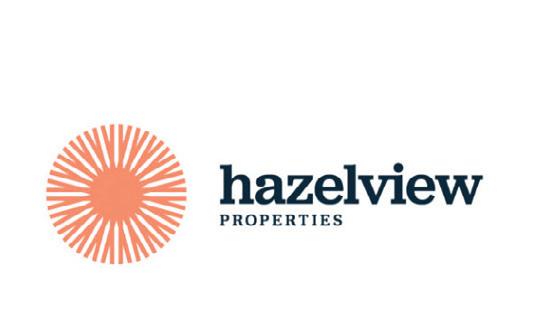



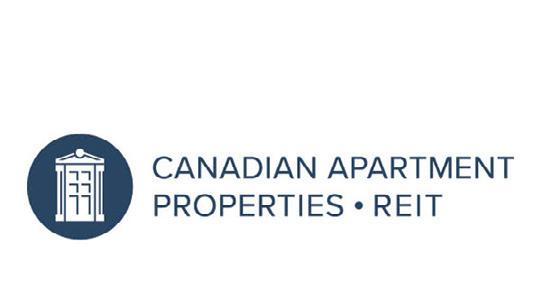








Social Media Award of Excellence Best Property Management Website www.theparkerlife.ca Best Advertising Campaign Steps Away. Literally Best Suite Renovation Under $25,000 262 Jarvis Street, Toronto Best Suite Renovation Over $25,000 Tower Hill East — 330 Spadina Ave. Contractor: MultiTech Contracting 2000 Best Lobby Renovation The Torontonian 45 Duneld Ave, Toronto Congratulations to the Winners of the 2022 FRPO MAC Awards! Best Curb Appeal West Lodge — 103 & 105 West Lodge Avenue, Toronto Best Amenities Renovated or Existing Knightsbridge Kings Cross Apartments 3 Knightsbridge Road, Brampton Best Amenities New Development Novus — 11 & 25 Ordnance Street, Toronto Rental Development Over 200 Units Story of Brampton Central™ 205 Queen St. East, Brampton Rental Development 200 Units or Less The Huron — 2475 Hurontario Street, Mississauga Environmental Excellence
The MAC Awards recognizes innovation and leadership in Ontario’s vibrant rental housing industry. Each year, our members demonstrate their commitment to high levels of service and rental accommodations. We are inspired by your efforts and can’t wait to see what the industry accomplishes in 2023.

Property Manager of the Year

Michelle Twiss
Resident Manager of the Year
Andrew Scheib
Community Service Award of Excellence
- Supplier Member






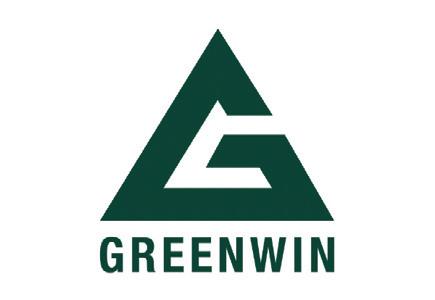







Company Culture Award of Excellence
Leasing Manager of the Year
Scott McCabe
Customer Service Award of Excellence
Community Service Award of Excellence
- Rental Housing Provider



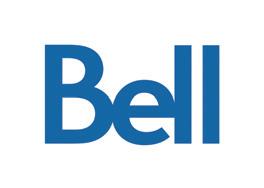

Impact Award

It’s Time to Celebrate!
Kristin Ley, Partner, Cohen Highley, has joined RHBTV News as an on air legal analyst. Kristin will be answering questions from YOU our viewers.

Send your questions to info@rhbtv.ca and Kristin will answer them on upcoming shows

The Right to Housing and what it means for rental housing providers
By John Dickie, CFAA President
Across Canada the most worrisome political issue currently facing rental housing providers is the claim by tenant advocates that the “financialization” of rental housing is interfering with tenants’ “right to housing”. “Financialization” basically means the profit motive. Some tenant advocates want to drive the profit motive out of rental housing. In that mis-guided goal, they have been backed by the Federal Housing Advocate. For more information on their specific goals, see page 24 in the November 2022 issue of RHB Magazine, which is available on-line.
The advocates argue that the profit motive results in constant pressure to raise rents. (They ignore the fact that rising rents draw out more rental supply, and help to manage excess rental demand. See page 30 for a discussion of those issues. Managing demand is a key short-term solution, and more rental supply is a key solution at all times.)
The new National Housing Council (NHC) is holding a consultation about the right to housing. SHS Consulting is supporting the NHC, and approached CFAA and GTAA to connect with private-sector rental housing providers. CFAA, FRPO, IPOANS, LandlordBC, EOLO and GTAA provided contacts who took part in the consultation. This article reports on what CFAA and rental housing providers said. For the consultation questions and more detailed answers, visit www.cfaa-fcapi.org.
The Definition of the Right to Adequate Housing (Q 1 & 2)
The NHC is using the phrase “right to adequate housing” (R2AH) rather than “right to housing” (R2H). The consultation guide says “The right to housing … should be seen as the right to live somewhere in security, peace and dignity.”
The use of the word “somewhere” is positive. It is implied that somewhere means somewhere suitable and appropriate, but that is better than a definition that seems to give everyone the right to keep living where they are living at any given time. The advocates often extend that claim to include the right to live in the present accommodation at the present rent, plus rent increases at or below the rate of inflation, regardless of increasing costs, the need for major repairs or a landlord’s rights to terminate a tenancy to renovate a building or to demolish it.
CFAA supports the right to adequate housing as defined by NHC. However, we have concerns about the details of implementation.
CFAA talked about the right to housing before and when it was enacted under the National Housing Strategy Act, several years ago. Housing rights advocates assured us that the right to housing was about requiring governments to use its resources to make housing more available to low-income people and vulnerable populations (primarily through social housing and subsidizing rents).
At CFAA Rental Housing Conference 2022, Leilani Farha, a leading tenants rights advocate, placed much more emphasis on the private sector’s obligations than anyone had expressed to CFAA before. CFAA finds a

rentalhousingbusiness.ca | 35 JANUARY 2023
Reevie Partner


Learn with us at Yardi.com/ Webinars (888) 569-2734 | Yardi.com/IMsuite ©2023 Yardi Systems, Inc. All Rights Reserved. Yardi, the Yardi logo, and all Yardi product names are trademarks of Yardi Systems Inc. Investments grow on Yardi • Provide a branded investor portal to publish property metrics and data • Automate the subscription agreement process for new investment opportunities • Track capital activity, investor commitments, contributions and distributions “Yardi Investment Manager has been a critical element of Baceline’s ability to grow our investor base and scale our investor relations department. The level of comprehensive, dynamic investment data brings confidence to our investors and credibility to our business.” BACELINE INVESTMENTS Lindsey
societal obligation to achieve the R2AH acceptable and desirable, but not an obligation imposed solely or primarily on rental housing providers.
Provincial Human Rights Codes and Acts make it clear that discrimination in rental housing is forbidden. Pursuant to the National Housing Strategy Act, there is a right to housing under federal law and regulations, but currently, there is no right to housing under provincial law.
What roles does private rental housing play in achieving R2AH? (Q 3 & 4)
CFAA plays a role through education about compliance with laws and promoting best practices. The private rental sector plays a major role because, among other activities:
a. Responsible rental housing providers respect the right of renters and potential renters not to be discriminated against on any grounds protected under Human Rights Codes
b. Private sector rental housing providers provide close to 90 per cent of all rental housing
c. Unless impeded by misguided government policy moves, the private sector is likely to build and provide close to 90% of the all new rental housing supply for the foreseeable future
d. The private rental housing sector provides housing that is safe, provides security of tenure pursuant to provincial law, and includes property management services
e. In many locations, the private sector provides rental housing at rents considerably below market levels due to the effect of rent control
f. Rental housing providers cooperate with governments and partner with social service agencies to assist tenants with special needs.
If the private rental supply disappeared, without being replaced unit for unit, low-income people would be much worse off than they are today. Each year, two-thirds of the housing occupied by renters in core housing need is provided by the private sector. (Community housing houses only one-third of needy people.) In the private sector, low-income renters may well pay more than 30 per cent of their income on their housing, but they have housing. (As reported by CMHC from longitudinal studies, often within a year or two, the household income of people in housing need rises so that their housing becomes affordable by the standard test, and the people move out of housing need.)
Provided the major changes to the economic system in housing as suggested by ACORN and the Federal Housing Advocate are not made, the private sector can mobilize and apply investment capital to increase housing supply, and to maintain and upgrade existing rental housing. The market process balances supply and demand for housing of different types, locations, and qualities.
Private market housing offers many choices and demands minimal effort from renters other than paying rent on time and not disturbing their neighbours. It offers the flexibility to move to respond to life changes.
The consultation guide asked participants to envision a world where we’ve realized the right to housing in Canada. The paper asked, what might your industry’s role look like?
The industry’s role would best be to do what we do best, namely providing rental housing in a cost-effective manner, and providing various combinations of rents and amenity packages to suit the variety of consumer preferences.

Governments have erected barriers to the development of rental housing, and inhibit the rental market from reaching a healthy equilibrium. Governments need to walk back those barriers and understand how housing policies impact housing markets.
Governments can support the growth of community housing, but they cannot realistically replace the private housing sector with the community housing sector (as the advocates want). That sector has taken 50 years to reach its current size. Even ignoring future population growth, the community housing sector would have to expand to eight times its current size to replace the private rental sector, which is utterly impractical.
rentalhousingbusiness.ca | 37
NATIONAL OUTLOOK
What commonly held views would have to change to achieve R2AH? (Q 5, 6 & 7)
One view which affects our sector is that of critics of the sector who say that the profit motive is against society’s interests. In fact, without the profit motive, the sector will not attract the investment to maintain and upgrade existing rental supply and to construct new supply, both of which are critical to achieve R2AH. (See page 24 for an article on the value of the profit motive.) Another erroneous view is that housing development is highly profitable. The development industry is highly competitive. Economic theory indicates that competition prevents high levels of profit from remaining in place, although profit can fluctuate up and down with market conditions. New housing is expensive. No one can create new affordable housing other than by building expensive housing and subsidizing its costs.
Reducing barriers to new developments would help the private sector to realize R2AH through providing more housing supply. Reducing barriers to conversions would help the private sector to realize R2AH through re-purposing existing housing supply to today’s consumer preferences and needs, and today’s environmental standards.
Absent reduced barriers, the private sector now (in early 2023) finds it difficult to justify developing rental housing even at full market rents. Such development was attractive between 2014 and 2020, but pandemic-related supply chain problems raised construction costs substantially. In 2022, interest rates and net capitalization rates increased substantially. (Both changes have hammered new development by the community housing sector as well as new development by the private rental sector.)
Developing modestly affordable housing requires subsidies. Providing deeply affordable housing requires major amounts of subsidies, possibly extending to paying for the full cost of development, by leaving the households in deep need to pay only the operating costs of their housing.
In re-developments in major centres, most large developers already assist renters who need to relocate to find replacement housing. Modifications can be made to make those systems work better, provided existing renters can be required to relocate. Otherwise, intensification will be prevented, when we critically need intensification to house the growing population.
R2AH is sometimes said to require governments to “invest a maximum of available resources”. The consultation guide asked us to comment.
Government resources are used to address many of society’s needs. The desirability of meeting R2AH more fully needs to be balanced against the desirability of meeting society’s other needs more fully, such as health care, childcare, support for seniors and transit. Within rental housing, there are numerous competing demands, including paying for the operating costs, financing costs, employee costs, repairs, major capital repairs, building life safety needs, building upgrades, and making buildings more environmentally friendly. Buildings also have to generate return on investment so that property owners will incur all the other costs and make more investments in new supply. There are tensions between all competing demands because they all need to be satisfied. An optimal result is not achieved by putting “a maximum of available resources” into any single one of them.
What attitudes need to change for diverse stakeholders to work toward R2AH? (Q 8 & 9)
R2AH is not just an issue about rental housing providers.
The perceived interests of homeowners in fighting increased intensification seems to pits them against developers, but really it pits them against the interests of future renters. Many homeowners like exclusionary zoning, which prevents the division of properties into flats or rooms. Municipalities are inclined to preserve the status quo, preventing re-developments, and developments.
When the rental market is tight, the interests of renters in stopping the demolition of their homes pits their self-interest against interests of future renters. While the fight appears to be current
38 | January 2023
JANUARY 2023
tenants against developers, the fight is really between existing renters and future renters, as well as against intensification and housing the population of the future. One critical part of the solution is there be an ample number of places for people to live. This requires building more housing faster. R2AH should NOT be implemented in ways that impede new housing supply or discourage the repair and upgrading of the existing rental supply. The consultation guide suggested that the profit-making and wealth-generating goals of our current housing system might be fundamentally at odds with the goals of housing as a human right.
CFAA answered that claim by arguments similar to those set out in the article on page 24, which addresses the benefits of markets and the profit motives. Only through the high income which the economic system allows society to achieve can there be sufficient resources set aside to look after health care, education, housing and the needs of low-income households. More and better targeted assistance for people with low-incomes needs to come from governments or charitable institutions. However, the bulk of funding would need to come from tax dollars. Tax dollars spent on housing cannot be spent on healthcare, subsidies to public transit, or education. Tax dollars which are not available cannot be spent on anything.
To shift to a proper understanding of the issues, the following would help:
a. Broader understanding of the costs of housing development
b. Broader understanding of the value of markets in meeting consumer demand and needs
c. Moving away from labels such as “financialization”, as there is no evidence housing providers labeled as “financialized” act less desirably than other housing providers
d. Broader understanding of the negative effects of rent control policies, and of barriers to development
e. Broader understanding of the benefits and efficiency of targeted rental assistance.
Conclusion
CFAA will continue to advocate for the interests of the rental housing sector. We invite you to contact us if you want to take part in the work of defending the rental housing industry. E-mail president@cfaa-fcapi.org.
CFAA-RHC 2023: Canada’s rental housing industry visits Halifax
CFAA Rental Housing Conference 2023 will take place from Wednesday, June 14, to Friday, June 16, at the Westin Nova Scotian in downtown Halifax. Register and book a hotel room now before the room block runs out! Register at www.cfaa-rhc.ca.
CFAA-RHC 2023 - Schedule in brief
CFAA and its partners are excited to visit Halifax, a city transformed in recent years by record-setting development. This year’s building tour will feature three new projects recently completed in downtown Halifax. Explore new trends and discuss new ideas with peers from leading organizations in Canada’s rental housing industry.
CFAA-RHC 2023 - Schedule in brief Wed, June 14
Building Innovations Tour
Welcome Reception
Harbour Cruise
Thu, June 15
Breakfast
Economic Update with Benjamin Tal Education Sessions
Awards Reception
Awards Dinner
Fri, June 16
Breakfast
Education Sessions
rentalhousingbusiness.ca | 39 NATIONAL OUTLOOK
JANUARY 2023
CFAA-RHC 2023 will be presenting many timely sessions on issues that matter. Sessions will cover topics in areas such as:
• Benjamin Tal (CIBC World markets), on the World economy and what it means for Canada

• Technology issues
• Marketing
• Rental Operations
• Human Resources
• Equity, diversity and inclusion
• The Halifax rental housing market
• Comparisons among development in Halifax, Ontario and other markets
• Information about the political threats to rental investments, how CFAA and our allies are defending the industry, and how you can help
• And much more!
Check future issues of RHB or cfaa-rhc.ca for more information.
Conclusion
Whether you are a rental housing executive or manager, a hands-on owner or a rental industry supplier, there will be great information, ideas and contacts for you at CFAA Rental Housing Conference 2023. Come meet with other engaged individuals in the rental housing industry, exchange ideas and see how we benefit from working together.
For more information, or to register for CFAA-RHC 2023, please visit www.CFAA-RHC.ca. Act now to ensure your registration and hotel room!
CFAA Rental Housing Awards 2023
The CFAA Rental Housing Awards Program celebrates excellence and achievements in our industry, and contributions by rental providers, rental suppliers and apartment associations. From among the finalists in each category, the awards winner will be announced at the CFAA Awards Dinner on Thursday, June 15. The Dinner is part of the CFAA Rental Housing Conference 2023 taking place in Halifax. For more information about the conference, and to book your tickets for the Awards dinner, visit www.CFAA-RHC.ca. Tickets are limited! Book yours today. In all, CFAA is now offering at least 11 awards categories. As in previous years, CFAA reserves the right to split categories in order to award more specific awards. CFAA Suppliers Council members, direct landlord members and affiliate members (rental housing provider members of one of CFAA’s member associations) are invited to apply.
• FOR APARTMENT ASSOCIATIONS
Association Achievement of the Year
• FOR RENTAL HOUSING SUPPLIERS
New Product or Service of the Year
CFAA Suppliers Council Member of the Year
• FOR RENTAL HOUSING PROVIDERS
Property Manager of the Year
On-Site Employee of the Year
40 | January 2023
Benjamin Tal, Deputy Chief Economist, CIBC World Markets
NATIONAL OUTLOOK
Off-Site Employee of the Year
Resident Manager/Superintendent of the Year
Rental Housing Provider of the Year
Marketing Program Excellence of the Year
Rental Development of the Year
Renovation of the Year
How to Apply



Visit awards.cfaa-fcapi.org for more program information, including instructions on how to apply. The deadline to apply is Friday, March 10.

Sign-up to receive updates about the awards and other CFAA programs by emailing admin@ cfaa-fcapi.org.
Call for Sponsors and attendance
CFAA’s Awards Program relies on sponsors to help keep our program open and free of application fees. Please consider sponsoring components of the awards program. Help CFAA celebrate excellence in the rental housing industry! For information about sponsor opportunities, please email events@cfaa-fcapi.org.
Attend the Awards Dinner on Thursday, June 15, 2023, and enjoy celebrating excellence in rental housing. Buy your ticket at www.CFAA-RHC.ca.

rentalhousingbusiness.ca | 41












Contact Michael Gnat 416-635-4835 mgnat@midnorthern.com 45 Red Maple Rd Richmond Hill, ON 1-844-733-1696 www.thebrick.com www.midnorthern.com Coming soon... New Luxury Appliance Showroom
President’s message
As we begin a new year, I reflect on where we were a year ago: still in lockdown and kids at home doing online learning. Fortunately, we gradually began to reopen our economy and resume in-person activities, and while COVID-19 may always be with us, we have returned to some sense of normalcy. At FRPO, we hosted our annual golf classic in support of Interval House in July complete with dinner and gathered at the Metro Toronto Convention Centre to showcase the best in our industry at the MAC Awards with a sold-out crowd in December. After all we have endured over the past three years, I am optimistic that we will have a great 2023! The focus of the Ford government continues to be on the need for more housing supply, including more purpose-built rental housing. Bill 23: More Homes Built Faster Act, which passed last December, contains several measures that support the rental housing industry, such as reducing government fees and charges, streamlining the approvals process, and cutting red tape. FRPO will continue to work with the Ministry of Municipal Affairs & Housing on the development of regulations that will support this bill, and on additional housing legislation expected in the spring with an emphasis on urgently needed RTA reform.
Your association is hard at work preparing an exciting calendar of in-person events and educational webinars, which will kick off with the return of our CHMC Rental Market Breakfast as an in-person event. I look forward to engaging with as many members as I can, so be sure to visit www.frpo.org for details on all of our events and where to sign up. And for those who haven’t heard, our Certified Rental Building Program was rebranded as the Canadian Certified Rental Building Program last year to support rental housing providers and residents all across Canada. To find out more about our quality assurance program, please visit www.crbprogram.org.
We know 2023 will present some economic challenges caused by high inflation and a sharp rise in interest rates. I continue to be amazed by the resilience of our industry and ability to go above and beyond for your residents in spite of enormous adversity. I often remind people this is not our response to a crisis; this is just who we are. FRPO will continue to ensure your voice is heard by the government, media, and the public as we ferociously educate and advocate for policies that support a vibrant rental housing industry.
Finally, I would like to thank you for your support. We are here to serve our members, so don’t hesitate to reach out with ideas, feedback or just to say hello.
- Tony Irwin, President

rentalhousingbusiness.ca | 43
Government relations update
As 2023 gets into full swing, FRPO has resumed engagement with various government ministries and officials to collaborate and support the Ford government as it continues to make progress on building 1.5 million homes over the next decade. In late November, Bill 23, More Homes Built Faster Act passed third reading and received Royal Assent. This legislation takes aim at government fees and charges by providing discounts from development charges for purpose-built rental housing, and makes a number of policy changes to streamline approvals and cut red tape. These are welcome changes that provide much needed relief to purpose-built proformas and will help to get shovels in the ground.
FRPO returned to Queen’s Park for our first in-person advocacy day since 2019. Activities included a lunch reception with MPPs and staff, and attending Question Period and in-person meetings with Minister of Municipal Affairs & Housing Steve Clark, Associate Minister of Housing Michael Parsa, and Attorney General Doug Downey. FRPO members shared their concerns and offered suggestions to improve the operating climate for rental housing providers.
Before the end of the last legislative session, the NDP also introduced two Bills that FRPO opposes: Bill 47, which would amend the RTA and Condominium Act to require rental housing providers to supply emergency generators that would be AGI ineligible, and Bill 48, which would expand rent control to all units. These are opposition Bills that are not expected to progress past the Bill introduction stage.
In November, Attorney General Downey announced $1.4 million for the LTB to hire 35 additional operational staff to enhance scheduling, issue decisions and orders faster, and help tackle the high number of cases. FRPO welcomed this announcement, but structural changes are also needed to ensure timely access to justice for rental housing providers and residents. In December, FRPO engaged Attorney General Downey, Ministers Clark and Parsa, and the Premier’s office on this urgent issue, and we are hopeful that the government will tackle this in the next Housing Bill expected in the spring.
Prior to the provincial election last June, we heard from a few members that the Condominium Management Regulatory Authority of Ontario had contacted them regarding purpose-built


rental buildings that are condominium titled to inform them that these buildings must be licensed under their authority and are subject to regulations under the Condominium Act and Condominium Management Services Act. FRPO has engaged with officials from the Ministry of Public & Business Service Delivery with proposed amendments that would exempt properties registered as condominiums but operating entirely as rentals. The government has been receptive to our position and we are advocating for inclusion in an upcoming red tape Bill.
We also plan to initiate a number of studies and reports to support our advocacy efforts, including an updated economic impact study of our industry in Ontario as well as other studies that explore the economic challenges that are unique to building purpose-built rental housing, as well as potential solutions. Government relations continues to be at the forefront of what we do to advocate for a strong rental housing industry with policymakers at Queen’s Park.
The Agenda - Discussing the housing crisis and affordability
On January 17, 2023, Tony Irwin joined Brad Bradford, Toronto City Councillor, and Carolyn Whitzman, Housing Researcher and Adjunct Geography Professor at the University of Ottawa, on The Agenda hosted by Steve Paikin. The topic of the show was whether the government should build more rental housing to make up for the shortage. The panel discussed the reasons for the shortage of rental properties, the rapid increase in housing prices, the economics of building condos vs. purpose-built rentals, potential solutions to address the issue, and other related topics.
The episode is available for viewing on YouTube: https://www.youtube.com/watch?v=CptyEITT3uY
Past events
December 6, 2022 – Dear Everybody with Holland Bloorview
As part of FRPO’s ongoing Diversity, Equity, and Inclusion series, FRPO partnered with Holland Bloorview Kids Rehabilitation Hospital for an educational webinar. Attendees learned about creating a more inclusive world for people with disabilities by keeping inclusion at the forefront of all aspects of your business. This complimentary webinar described best practices of disability inclusion in the workplace. It also discussed authentic inclusion and representation of people with disabilities in the workplace through using proper language with disability, and provided tips and tricks on being an ally and how to be an ongoing resource to your team moving forward.
Upcoming events
February 22, 2023 – CMHC Rental Market Survey
Breakfast
This breakfast event will take place from 8:00 – 10:30 am at the Parkview Manor, 55 Barber Greene Road in Toronto. CMHC will share their key findings from its October 2022 Rental Market Survey for the Greater Toronto Area. They will also discuss trends in other major Ontario centres. The presentation will conclude with an outlook of where rental markets are headed in 2023 and beyond. Registration is $80 per person plus HST, and is open to FRPO and GTAA members.
July 18, 2023 – FRPO Charity Golf Classic
This popular event will take place at Lionhead Golf Club in support of Interval House. More information about this event will be provided later this spring.
Ontario’s leading advocate for quality rental housing
FRPO is the largest association in Ontario representing those who own, manage, build and finance residential rental properties.
For membership inquiries please contact Lynzi Michal, Director, Membership & Marketing
Federation of Rental-housing Providers of Ontario 20 Upjohn Road, Suite 105 Toronto M3B 2V9
416-385-1100 x 22
lmichal@frpo.org
www.frpo.org
rentalhousingbusiness.ca | 45
Yes, we can!
Since MetCap Living established itself as a leader in property management, we have routinely been asked one, simple question; “Can you help us run our property more effectively?” And, for well over thirty years, the answer has remained — Yes, we can! Our managers are seasoned professionals, experienced in every detail of the day to day operations and maintenance of multi-unit rental properties. From marketing, leasing, finance and accounting, to actual physical, on-site management, we oversee everything.

Guaranteed vacancy reduction, revenue growth and net profitability — when you’re ready to discuss a better option; we’ll be there. You can count on it.
Kazi Shahnewaz Director, Business Development
Office: 416.340.1600 x504
C. 647.887.5676
k.m.shahnewaz@metcap.com
www.metcap.com
Hot Topics:
HDAA discusses the status of the licensing pilot project in Hamilton, and recalls key tips from its most recent Dinner Meeting on dealing with the LTB. pg. 49
LPMA discusses how small landlords are being negatively impacted by the LTB backlog and what the government has been doing to address the issues. pg. 53


EOLO discusses the City of Ottawa's new Vacant Unit Tax and its housing spending. pg. 57
IPOANS discusses its advocacy efforts, Nova Scotia's unsustainable growth strategy, the RTA, and the association's education efforts. pg. 61

The Member Associations
RHB’s forum for rental housing associations to share news, events and industry information

We provide expert advice and financial incentives to help affordable multi-family housing and eligible private market-rate housing providers with low-income tenants make efficiency improvements to boost building performance and reduce operating costs. Energy efficiency is key to sustainability — Free expert advice and $200,000* for equipment upgrades up to Start today by contacting an Energy Solutions Advisor. 1-866-844-9994 energyservices@enbridge.com * HST is not applicable and will not be added to incentive payments. All incentive offers are available to Enbridge Gas customers, including those formerly served by Union Gas Terms and conditions apply. Visit enbridgegas.com/affordable for details. © 2022 Enbridge Gas Inc. All rights reserved. ENB 961 06/2022 enbridgegas.com/affordable Eligible efficiency measures Lasting benefits Control systems Other custom solutions Water heaters ERVs and HRVs Boilers Make-up air units How to lower natural gas use and costs Lower greenhouse gas emissions. Enhance resident comfort and well-being. Reduce energy use and operating costs.
PRESIDENT’S MESSAGE
The HDAA wishes everyone a fantastic New Year! We are excited for the year ahead, as we have a full schedule of events, including our Trade Show and Golf Tournament and some great dinner meetings in the books. We look forward to engaging with our members and providing more opportunities for networking. We will also be continuing our advocacy work and keeping lines of communication open with the City of Hamilton and working with other associations and organizations to ensure the rental housing industry continues to be a good industry for all parties involved.
 - Arun Pathak, President, HDAA
- Arun Pathak, President, HDAA
Licensing pilot project
Hamilton is now about eight months into their two-year licensing pilot project. Their first application intake period began on April 1, 2022 for Zone 1. The licensing pilot project requires a license for rental housing units and buildings or parts of buildings with four or less selfcontained units, detached homes or townhouses, and includes annual fees, zoning verifications, site sketches or surveys, and fire and electrical inspections. On November 29, 2022, the City of Hamilton’s Planning Committee received an update on the licensing pilot project. The report stated that as of that date, there were only 115 licensing applications filed over their first two zones.
The City received 106 applications solely based on the staff mail-outs and an additional nine applications were received that were not initially on the staff list of potential rental housing properties. Fifty-seven of the applications have been submitted for Zone 1, setting the compliance rate at 28 per cent. Comparatively, Zone 2 had a compliance rate of 31 per cent, with 49 applications received.
The first rental housing license was issued September 27, 2022, approximately four months after the completed licensing application was submitted. To date, four licenses have been issued, all from Zone 1. The initial report for the project expected that approximately 1500 – 2000 properties could require licensing in the pilot program and Council supported the hiring of up to four temporary full-time Fire Inspectors to support and facilitate the process. At the
moment, only one new fire inspector has been recruited, as revenue from the fees has been lower than predicted.
The licensing pilot project is not generating the numbers that were initially hoped for to provide cost recovery. It is still in the early stages with only two of the total seven zones past the phased in timelines, with a somewhat low compliance rate. This may be due to the City’s estimates being high in that there are not as many rental properties as they thought. The low participation rate could help stop licensing from continuing, or it might tempt councillors to raise fees to achieve better cost recovery or bring in large fines to “encourage” rental property owners to comply.
Past events
January 11, 2023 – Dinner Meeting
The HDAA held our first dinner meeting of the new year on January 11, which had a great turnout! We were joined by Patricia Duwyn from Cohen Highley LLP, Kim Holleran from Effort Trust, and Petar Guzina from Guzina Law on a panel to discuss how to avoid the Landlord and Tenant Board (LTB). Questions ranged from how to properly screen a prospective tenant to what to do at the LTB and what to do after.
The panel began by discussing tips on tenant selection and what information a landlord can ask for. The panelists emphasized avoiding asking anything that is contrary to the Human Rights Code. A three-pronged approach was suggested

rentalhousingbusiness.ca | 49
to verify income, credit, and rental history. Ideally the rental property owner should obtain the credit report, not accept a copy provided by the applicant, as copies are easy to alter.
With regard to references, it is always best to call the rental provider before the current one, rather than the current one for a more honest reference. It is also good to obtain information that would help to track down a tenant after they move out should rent arrears or damages need to be recovered. Another tip involved using canLII to screen tenants, which in some cases publishes tenant names in LTB orders. Using social media is a great resource for screening tenants, as many people use multiple forms of social media and you may find a lot of information on a prospective tenant this way.
When dealing with a tenant at the start of the tenancy, have conversations about rent payment expectations, and the process if rent is not be provided on time. This way a tenant is not surprised when served with an N4 as per procedure. It is important to go through the lease agreement and additional terms with tenants so they are fully aware of the lease terms and their responsibilities. A thorough unit inspection with photographs should be done with the tenant noting existing damage. This will be useful in situations where damage occurs and you need to make an application to the board. Any procedures about maintenance requests should be discussed as well.
The panel discussed rent discounts. They are regulated by the RTA and can be tricky to calculate. They can alter the lawful rent paid, causing complications for rent increases. Using discounts is not recommended, unless you know the policies and legislation to avoid any issues.

If an issue with non-payment or late payment occurs, landlords should give the tenant a notice of termination for non-payment of rent (an “N4”) as soon as possible, and file an application with the LTB as soon as the waiting time has lapsed (if the tenant has still not paid the rent). Some may see delivering an N4 quickly to be overly harsh, but there is no legal way to recoup rent arrears other than to start the process and proceed to the LTB if needed.
Communicate with your tenant during this process to make them aware you are following standard procedure as discussed and are not trying to evict them. Work with them to discover why rent was late and devise an action plan moving forward. Since March 2020, the LTB requires that you try to make a repayment plan with your tenant before the LTB will look at eviction. There has been no indication when this requirement will be lifted, and so take steps to negotiate to make a repayment plan with tenants behind on rent. Also keep an eye on the LTB website for updates to requirements and changing legislation to make sure you are up to date.
When filling out landlord-tenant forms, it is imperative to fill them out correctly. The LTB is particular about correctness on forms. The N4 starts a legal process and they have little leeway in the legislation to proceed with forms filled out incorrectly. The most common error is typically the termination date, which should be counted starting the day after an N4 notice is given. Read the instructions provided on the LTB website as they relate to notices and applications.

50 | January 2023
With regard to alternatives to the LTB, the panel discussed the option of cash for keys (i.e., buying the tenant out). This option may not be as successful as in the past as tenants are more aware of their rights and the market and rising rents. They often will not be easily enticed with cash for keys that would not carry them far in an environment of rising rents. Buying a tenant out is not always a bad idea and can be successful, but that does depend on the situation. When coming to such an arrangement, it is imperative there is a written agreement that covers outstanding concerns such as whether the tenant can still take a maintenance complaint to the LTB. Make sure the agreement states it covers these situations and includes the statement that it resolves all outstanding issues. Also make sure an N11 form is signed, which makes it clear that the landlord and tenant reached an agreement to terminate the lease. An N11 gets a rental owner much faster processing at the LTB.
Recent legislation provided landlords with the ability to recover rent arrears and damages from previous tenants through the LTB rather than Small Claims Court. The process is through an L10 application. An important aspect of this application is being able to deliver the documents to a former tenant, and provide information on how their new address was obtained. It is best to use personal service so a tenant cannot argue the
notice was never received. Use a process server or skip tracer to verify the new address and serve the tenant, so those issues are not in question at the LTB.
To enforce an order or receive garnishment of a tenant’s income or assets, an LTB order would need to be taken to Small Claims Court for enforcement. The LTB won’t enforce an order or provide garnishment. The court will not garnish income that is government assistance, such as OW and ODSP. However, in some cases, the tenant would not be eligible for social housing until arrears are paid, which is an incentive to bring the arrears to collections as it will be put on a credit report and encourage tenants to pay. Sending arrears to collections is highly suggested as it provides more ability to collect rent arrears. It shows up on a tenant’s credit report so it is visible to other landlords and it affects their credit, encouraging a tenant to pay.
Upcoming events
March 8 – Dinner Meeting
April 18 – Trade Show
The HDAA is excited to announce we will be holding our Trade Show again! The Trade Show will take place on April 18 at the Michelangelo Events & Conference Centre.

We will be announcing more information soon so save the date and keep an eye out on our website for more details.
May 10 – Dinner Meeting

June 6 – Golf Tournament
The HDAA is excited to announce that we are bringing back our Golf Tournament. It will be held on June 6 at the Century Pines Golf Club.
We will be releasing more details and pricing soon. Save the date and keep an eye out on our website for more details.
Hamilton & District Apartment Association
Since 1960, the Hamilton & District Apartment Association has grown significantly. Our members manage over 30,000 units throughout Hamilton, Burlington, Brantford, Guelph, Mississauga, Oakville, St. Catharines and into the Niagara Peninsula. The association is a highly respected organization, sought out regularly by government, industry, media and the public.

Interested? Call us or join online!
Ph: 905-616-2058
Web: www.hamiltonapartmentassociation.ca
rentalhousingbusiness.ca | 51

Over 60 Years of Experience (905) 842-4141 www.awesleypaving.com Proven Professional Paving Services Commercial • Industrial • Residential Bonded • Insured
PRESIDENT’S MESSAGE
LPMA ushers in 2023 with informative events
After a year-long absence, LPMA’s trade show is returning in April. We plan to have a fire safety presentation at the show, which will be held at the London Hellenic Community Centre. Stay tuned for details.
Environmental and waste management is the topic for February’s member dinner and meeting. Register online today.
If you haven’t had an opportunity to visit our member portal, please do. All forms can be purchased directly online. And if you missed our Property Management 101 seminars, the recorded video modules will be available for purchase in the near future.
Finally, our Christmas party was a huge success! It was great to see everyone in person. The evening was filled with holiday spirit, generous hearts, and a surprise visit from Santa and Mrs. Claus. Thank you to everyone who was able to attend and show their support.
Until next time, be well.
- Shane Haskell, President, LPMA
SMALL LANDLORDS ARE LOSING THEIR LIVELIHOODS AS LTB BACKLOG GROWS
Being a small landlord in Ontario is becoming a high-risk occupation due to the continuing backlog at the Landlord and Tenant Board (LTB). The length of time it takes to process rental arrears applications is causing small landlords to lose tens of thousands of dollars while tenants live rent-free. The situation is so dire that some experts believe the province is losing affordable rental housing at a time when tenants need it the most.
London lawyer Joe Hoffer said the situation at the LTB is having a negative effect on landlords’ desire to provide rental housing.



“Landlords who might have thought of buying a property and renting it out are really having second thoughts because of the systemic dysfunction at the Board.”
Hoffer said the LTB failed to make a dent in the backlog that started in 2018 and lengthened considerably after the provincial government paused residential eviction proceedings for five months in 2020. The majority of applications pending before the LTB are L1 applications to evict a tenant for non-payment of rent and to collect the rent the tenant owes.
“In my view, landlords would be very lucky on an arrears application to get a hearing in seven or eight months,” Hoffer said. By comparison, tenant applications are being scheduled in as little as six to eight weeks. Sometimes tenants want a rent reduction for trivial reasons, such as swimming pools not being open during specified hours, Hoffer said. Although the LTB has made an effort to hold hearings for urgent matters, including drug dealing, serious conduct issues, and threats of physical harm, the bar is set high.
“If, for example, a landlord said, ‘Well, I’m in dire financial straits or the tenant hasn’t paid rent in 10 months,’ that wasn’t enough to trigger an urgent hearing,” Hoffer said.
Sean McNally, a landlord who lives in London, said in his experience it’s been next to impossible to evict tenants who are dealing drugs or threatening the neighbours around them.
“We’re seeing that quite a bit in the industry.
Would you like to have a drug dealer next to you and people shooting up outside your door and banging on your door
rentalhousingbusiness.ca | 53
Shane Haskell
Joe Hoffer
Sean McNally
trying to get in? It’s quite a problem. I don’t know why they (adjudicators) don’t see that. They don’t seem to consider the other tenants,” he said.
He’s also frustrated by the fact it has taken him eight months to get a hearing for arrears of rent applications. The tenant often doesn’t appear, which causes the case to be delayed. During that time, the tenant stops paying rent and it’s not unusual to be left with arrears of up to $10,000, McNally said.
The situation is particularly bad for landlords who own just one unit.

“I’ve seen so many landlords who are going bankrupt with some getting fired from their jobs because part of their job is to have good credit. Because they’ve been put into situations like this, they can’t pay bills and they lose their job, and they lose their own house,” McNally said.
Another dilemma centres on the inability of owners to sell a property that has a sitting tenant.
Andrew Macallum, a sales representative with Royal LePage Commercial in Kitchener, said sellers of smaller-unit properties are unwilling to guarantee vacant possession because they know their tenants may refuse to move out before the closing date. Without that guarantee, the only prospective buyers willing to take a chance are new landlords who don’t understand the intricacies and consequences of landlordtenant legislation.

Macallum is currently working with a couple of clients who want to list their properties, but are afraid the tenants won’t cooperate with the showings and sale process. Because potential buyers consider tenants a liability, he said his clients may not be able to sell their properties, even at a discount. Tenants realize that if they vacate their rental unit, they will pay a much higher rent for another.
“Their motivation to move is very, very low,” Macallum said. Overall, he recommends that clients speak to a lawyer or paralegal to ensure they understand the Residential Tenancies Act and their obligations as a landlord. If they want to move into a property that has a tenant, or have a family member move in, they will likely face challenges.
“Even things that are allowed under the Residential Tenancies Act may not go as smoothly as you think,” he said.
According to Tribunals Ontario’s 2021-2022 Annual Report, the LTB appointed and trained 16 additional adjudicators to help clear the hearing backlog. As of March 31, 2022, there were 39 full-time and 51 part-time adjudicators, the highest number ever appointed. By comparison, the annual report for the fiscal year ending March 31, 2021 indicated there were 37 full-time and 39 part-time members.
The provincial government announced in late November that it had made a $1.4 million investment in the LTB, which will provide for the hiring of at least 35 operational staff. They will process applications, schedule hearings, and respond to client inquiries, said Janet Deline, a spokesperson for Tribunals Ontario.
Although the LTB has been hiring and training new adjudicators, Hoffer said many quit due to their extremely high case loads. In 2022, there were a number of hearings in which the adjudicator conducted the hearing and heard the evidence, but hadn’t yet written the order and then quit.
“What the Board had to do in those situations was order and schedule a new hearing so the landlord had to start all over again before another Board member in a new hearing.”
In one case, Hoffer said a client was compelled to return for a third hearing.
Tony Irwin, president and CEO of the Federation of Rental-housing Providers of Ontario (FRPO), said he and his board of directors have met with the Attorney General and the Minister of Housing, as well as the Premier’s office, to discuss the challenges they’re seeing among rental housing providers and to suggest possible solutions. In particular, he has advocated for the hiring of
54 | January 2023
Andrew Macallum
more adjudicators at the LTB.
“The system is not providing fair access to justice for anybody who engages, whether it be rental housing providers or residents. I think it’s very clear that access to justice is not being provided on a timely basis and it does need to improve significantly,” he said.
government really comes to a crashing halt. Government is not going to be willing to engage with a stakeholder group if they know that that group is going to pursue a legal strategy against them,” Irwin said.
Tony Irwin
An increase in media stories about the backlog is making Canadians aware of landlords’ plight. Irwin said that’s significant because landlords often feel they haven’t been represented fairly.

“It’s not good that these stories occur. The emotional, psychological, and financial toll that these situations take on rental housing providers is heartbreaking. But to be able to get some attention in the media, we know that does have an impact on policymakers and politicians who watch,” he said. Although landlord associations have asked whether FRPO would launch a lawsuit in an effort to reduce the backlog, Irwin said it is the wrong approach. Advocating on behalf of such a heavily
Hoffer believes the most effective way of curing the backlog would be to restore the practice of default hearings where a landlord would receive an order if the tenant failed to respond to an arrears application. In such cases, a default order would be issued, eliminating the need for the tenant to appear for the hearing. The time-saving practice was discontinued when a tenant lobby group demanded there be a hearing in every case regardless of whether the tenant had a defence. Even if tenants are evicted, they know they can file a Divisional Court appeal that automatically stays their eviction and allows them to continue to live rent-free, Hoffer said.

Although the provincial government has introduced legislation aimed at generating new rental housing, it’s overlooking the fact that small landlords provide a huge amount of affordable rental housing.
“I think the government, because of its failed policies, has done more to kill the availability of


rentalhousingbusiness.ca | 55
MULTI-RESIDENTIAL CONTRACTING Design-Build Common Area Refurbishment Building Envelope Restoration V i s i t u s o n l i n e a t w w w p a c b u i d l i n g g r o u p c o m o r c a l l 9 0 5 - 6 0 5 - 4 7 2 2 t o g e t s t a r t e d t o d a y ! W e p a r t n e r w i t h o u r c l i e n t s t o u n d e r s t a n d t h e i r g o a l s a n d i n t e r p r e t t h e i r v i s i o n , b u i l d i n g s p a c e s t h a t a r e d i s t i n c t l y s u i t e d f o r e a c h e n v i r o n m e n t W i t h a n i n t e g r a t e d a p p r o a c h a n d s e a m l e s s p r o c e s s , w e o u t p a c e t r a d i t i o n a l e x p e c t a t i o n s .

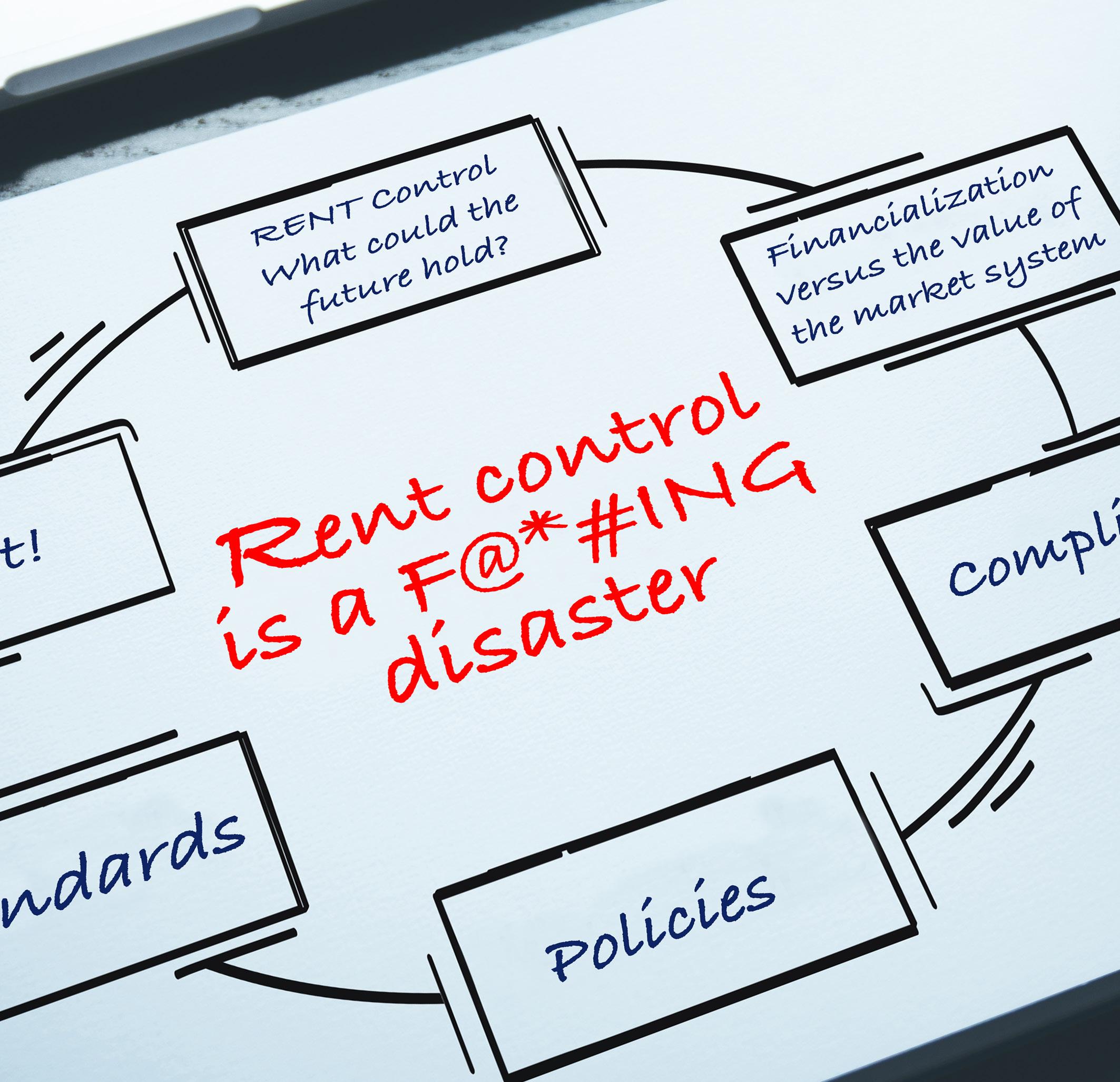
The official publication of: Canada’s #1 most widely read publication for Apartment Owners, Managers and Association Executives Vol. 15 No. 5 January 2023 OneVoice,OneMessage,OneMagazine! Thinkaboutwhatyou’llmissinthenextissue.SubscribetoRHBMagazinetoday!rentalhousingbusiness.ca/subscribe
Chair’s message
This report addresses the new City Vacant Unit Tax (VUT), which will impose an extra property tax on most residential units in buildings up to six units that were vacant for more than 184 days during 2022. We then explain the housing services the City provides, and what they cost.
EOLO looks forward to our Spring Education and Networking Event on March 29. This is a members-only free event. If you or your company are not yet EOLO members, please join now to attend the event.
- John Dickie, EOLO Chair
New City tax to apply to vacant units
Last spring, Ottawa City Council approved a new Vacant Unit Tax (VUT) at 1 per cent of assessed value. The tax only applies to residential properties of six or fewer units on a single assessment roll number. However, the VUT applies to freehold townhouses and condo units, so it may apply to many readers. The VUT does not apply to vacant land (coded as 100 by MPAC), or to a property being used for a commercial purpose, such as a show home.
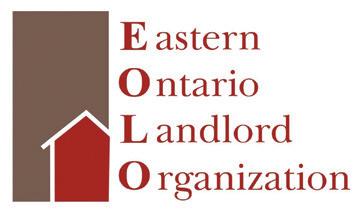
Key provisions include:
• The standard test for a vacant unit will be vacancy for more than 184 days during a calendar year, which need not be consecutive (triggering the VUT for the next year).
• Units within two- to six-unit buildings will be assessed individually.
• Owners (or their property managers) will need to fill a declaration by March 16, stating the occupancy status of their properties during the previous calendar year, and claiming any applicable exemption. (All homeowners will need to file the declaration too.)
• Absent an exemption, if a property is unoccupied for more than 184 days in 2022, the VUT will be added to the final tax bill for 2023, issued in May or June. That will also happen if no declaration is filed by the deadline, March 16, 2023.
Exemptions
Here are the exemptions:
• Principal residences (including homes with “granny suites”)
• Rural residences with a short-term rental permit
• Certain seasonal property
• Owner in a care home
• The year of the owner’s death and the next year
• A court order in a lawsuit that is blocking use or occupancy (unless the order is due to the owner’s negligence)

• The year of sale or purchase
• Construction or renovations under a building permit
In some cases, property owners will be able to combine exemptions. Either owners or managers can make a declaration for a property, but if no declaration is made in a timely manner for the 2022 occupancy status, then the property will be deemed to be vacant, and the VUT will be applied on the 2023 final tax bill.
The City’s process for the landlord declaration to avoid the VUT is somewhat onerous, requiring owners or managers to enter lease start and end date for tenants in every unit that is potentially subject to the tax. If a tenant or group of tenants has occupied a unit throughout the year, the declaration needs to state that the tenancy began on January 1, 2022 and ended on December 31, 2022.

rentalhousingbusiness.ca | 57
Background
The City’s goals are to gain more rental housing supply, and to pressure owners to keep old properties in a better state of repair. EOLO opposed the VUT. Bluntly, we think it is none of the City’s business how a person uses their property. We also argued that interim vacancies can be the most efficient use of a property, and advocated additional exemptions. Our arguments fell on deaf ears. However, we did succeed in pushing back against late moves to impose a higher VUT rate, at more than 1 per cent.
By a large majority, the last City Council enacted the VUT. However, due to implementation issues there has been a public uproar, and some City Councillors are re-thinking their positions.
What can we expect
Close to two thirds of residential dwelling units have been declared, leaving about 100,000 units to be registered before the deadline of March 16, 2023. This year, some late filing will be allowed without a fee. In any year, an appeal can be made for a fee.
On December 14, 2022, the new City Council passed a motion that staff report back to Council via memo, on two occasions in 2023. By June 30, 2023, there is to be a staff report with data related to the VUT regarding:
• The number of declared vacant units
• The number of deemed vacant units, due to no declaration being submitted by a property owner
• The number of late declarations from property owners
By October 30, 2023, there is to be a staff report with the preliminary data related to the VUT regarding:
• The number of Notices of Complaint received by the September 15th deadline (regardless of their assessment status)
• The number of presumed final vacant units – those declared and/ or not having their deemed vacant status contested
• The number of properties that would be subject to the waived late fees, as well as the dollar value of said fines
• The number of the complaints and/or inquiries received from residents regarding the new VUT program
• The number of declaration audits underway
The receipt of those reports may be opportunities for Council to repeal the VUT program. However, City staff expect only minor change for the 2023 year, and also expect to provide a full report with final data and the results of their audits in the fall of 2024. It seems unlikely that the VUT will be cancelled for taxation in 2023. No one can be certain whether the VUT will be cancelled for 2024, or 2025, or at all.

Tips for rental owners
Owners or managers with more than 50 units can request permission to make a bulk declaration for 2022. If granted, City staff will pre-populate a spreadsheet and accept the returned spread sheet as the declaration. Requests can be made by e-mail to vut-ilv@ottawa.ca. That same email can also be used to send questions to City Finance staff.
The City’s housing system
On January 17, 2023, the City’s Housing Department held a Meet & Greet and Housing services orientation for City councillors. EOLO Chair John Dickie attended to connect with returning City councillors and meet new councillors. Over the course of one hour, John connected with Catherine Kitts, Riley Brockington, Theresa Kavanagh, and Jeff Leiper, and met and spoke with new councillors, Wilson Lo, David Hill, Stéphanie Plante, Marty Carr, and Ariel Troster.
58 | January 2023
(For a complete list of City councillors, with photos and the backgrounds of the new councillors, see the Ottawa Regional Annual 2022, published by RHB Inc, available online at https://www.rentalhousingbusiness.ca/theannual-ottawa-2022/ starting at page 22.)
In the orientation portion of the meeting, the City Housing staff explained the various parts of the Housing Department’s two main branches, the Homeless and Shelter branch and the Housing branch, along with the amount spent by each branch in 2022.
As illustrated in Chart 1, the Homeless and Shelter system is supported to a total of $53 million. As illustrated in Chart 2 , the City’s housing system is supported to a total of $192 million.
Community housing used to be called “social housing.” It includes Ottawa Community Housing and over 50 other non-profit housing corporations such as Centertown Citizens of Ottawa Corporation, Nepean Housing, and Gloucester Housing. Those housing agencies also receive rents from tenants, many at rentgeared-to-income (RGI) rates, but some at close to market levels.
Included in the $131 million bucket are the rent supplement payments made to some private rental providers, and the housing allowances or housing benefits paid to low-income tenants who rent in the private rental market.
The bucket known as “affordable housing” consists of support for non-profit housing agencies to develop new housing to rent at below-market rents, but rents that are not geared to the tenants’ changing incomes.
To varying degrees, all those figures include money that comes to the City from the provincial and federal governments, but most of the spending is from the City’s property taxes.
To put those figures into context, the total City spending budgeted for 2022 was $4.4 billion. Property taxes raised close to $2.0 billion, of which $1.3 billion is from the residential class, $450 million from the commercial class, $138 million is from the multi-residential classes and $34 million from the industrial class. Other substantial funding came from government transfers and user fees.
BECOME AN EOLO MEMBER NOW!
EOLO invites Ottawa area landlords to join the organization. Have your interests and concerns heard, and benefit from EOLO’s support. As an EOLO member, you will be able to:
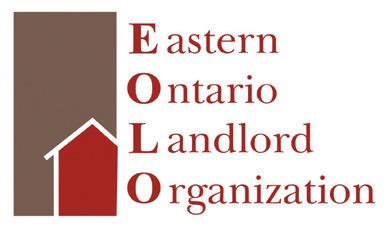

• Receive prompt emails of relevant City rule changes
• Attend two networking receptions a year
• Attend two free education events a year
• Receive all 6 annual issues of RHB Magazine with current developments, City and provincial funding programs, and landlord-tenant laws.
To apply for membership, go to www.eolo.ca, download the membership application form and send it to us at the contact info on that website.
rentalhousingbusiness.ca | 59
Homelessness Prevention, $14M
Unsheltered Services, $4M Emergency Shelters, $35M
Chart 2 Investment in Homeless and Shelter System (total $53 million)
Housing with Supports, $28M
Community Housing, $131M
Affordable Housing, $33M
Chart 1 Investment in Housing System (total $192 million)
For over 25 years, Quality Allied Elevator has created practical solutions for all your elevator service, maintenance and modernizations.


We are dedicated to our customers and pride ourselves in customer communication

EXECUTIVE DIRECTOR’S MESSAGE
In 2022, Nova Scotia’s rental housing providers faced many challenges, including high inflation, rising mortgage rates, increasingly biased regulations, a broken Residential Tenancies process, and spiking costs for insurance, energy, utilities, and property taxes. These challenges were compounded by the continued 2 per cent rent cap, making it impossible to recover operating costs fully.
IPOANS made significant efforts in 2022 to support the stability of Nova Scotia’s residential rental market. We increased our media presence and conducted additional research to provide reliable and verifiable data to policymakers and government officials. This aimed to counter misinformation in mainstream and social media and to support informed decision-making.
To address the issues of the rent cap and bring fairness to the Residential Tenancies process, IPOANS submitted a 12-point solutions document to the government, which included recommendations for immediate direct subsidies to offset the rent cap’s impact and the modernization of the Nova Scotia Residential Tenancies Act.
IPOANS, an organization representing the rights of Nova Scotia rental housing providers since 1978, anticipates that 2023 will be another challenging year for its members. IPOANS will continue to support its members by vigorously advocating and lobbying for fair and relevant regulations that reflect Nova Scotia’s current rental market.
- Kevin Russell, Executive Director
Advocacy
Rent cap – Inflation relief package
At a breakfast event in December, Nova Scotia’s Premier Tim Houston announced that the 2 per cent rent cap would continue until December 31, 2023, when it would be phased out beginning in 2024. He acknowledged the difficulties the rent cap has caused for Nova Scotia rental housing providers, particularly during times of high inflation. When asked if he would consider a financial relief package for the industry, he said he was open to discussions. IPOANS has communicated with the premier’s office since December, presenting relief plan proposals.
Compliance and Enforcement Unit (CEU)
In November, the department responsible for the Residential Tenancies program, Service Nova Scotia, and Internal Services announced plans to create a Compliance and Enforcement Program, a proposal that IPOANS had advocated for over two
years. The government contracted a consulting firm to design the program and will present its findings to the government at the end of January 2023. IPOANS participated in stakeholder meetings and a subsequent one-on-one meeting with the consulting firm, and we’re cautiously optimistic that the issues rental housing providers confront are well understood. However, it remains to be seen if the government will fully address the industry’s needs in the report.
2023 property tax assessments
Property assessments for 2023 show an average increase of 20 per cent due to high property valuations. IPOANS requested that the government include the apartment rental industry in the Capped Assessment Program, which would cap assessments at the same rate for single-family homes, land-leased communities, and condominiums. The resulting tax property
rentalhousingbusiness.ca | 61
increases are expected to exacerbate financial losses at a time when rental housing providers are having difficulties covering operating costs due to the 2 per cent rent cap and no option for above-guideline increases.
Rental housing providers exiting the industry
According to surveys conducted by IPOANS, an emerging trend is small rental housing providers deciding to leave the industry due to sustained negative cash flow. The survey found that 12,000 units of single-family homes, duplexes, triplexes, and townhouses are at risk of being sold back into the single-family home ownership market, removing them from the rental market at a time when more rental units are required, not less.
Unsustainable population growth strategy
As of October 1, 2022, the population of Nova Scotia has increased by 32,566 compared to the previous year, with 21,000 of those new residents settling in Halifax. However, the government’s housing policies are causing rental housing providers to exit the industry, and insufficient new rental units coming to market. Those problems call into question whether the government’s population growth strategy is sustainable without a significant rethink of government housing policies and funding programs.

Residential Tenancies Act (RTA)
IPOANS presented the government with a 12-point solution plan to update the Nova Scotia Residential Tenancies Act. As it currently stands, the RTA has led to the rise of “professional tenants” who exploit the ineffective “vacant possession” process, allowing them to live in rental units for six or more months without paying rent and causing significant damages to the property. IPOANS considers this behaviour rent theft, which should be regarded as fraud with appropriate penalties being levied. However, the government still needs to respond to resolving this issue, which costs rental housing providers hundreds of thousands of dollars annually.
Key position points:
• Mainitain fixed-term leases in their current format
• Allow immediate filing with Nova Scotia Small Claims Court for “non-payment of rent,” opting out of the residential tenancies mandated mediation process
• The government establish an Emergency Rent Fund Bank to assist tenants who are facing financial difficulties in paying their rent
• Shorten “non-payment of rent” filing deadlines
• Record residential tenancies hearings
• Publicly report statistics for residential tenancies filings and hearing outcomes
• End using short-term medical notes (prescription pad) for early termination of leases
• End the backlog at Sheriff Services by using certified and trained private sector bailiff contractors
Education
The IPOANS Residential Property Management course in 2022 saw a successful turnout, with 20 students enrolled. In May, the Residential Building Service Excellence course will once again be offered, providing education on the fundamental components and critical services of a building, and giving staff the knowledge to communicate effectively with residents when issues arise.
62 | January 2023
Membership services
Events
The IPOANS Women in Industry Luncheon event in November 2022 was successful, with 180 attendees.

IPOANS 2023 premium event schedule:
• Awards, Gala, and Trade Show, Wednesday, May 10, 2023
• Annual Golf Tournament, Thursday, September 14, 2023

• Women in Industry Luncheon, November TBD
Membership
Our membership drive has begun, and we anticipate building on last year’s 5.8 per cent increase in membership. The growth, primarily due to small rental owners joining, was driven by increased visibility through media and social media, and we expect this trend to continue in the current year.
Corporate sponsors
We would like to recognize and thank our 2022 corporate sponsors for their generous support.
• Platinum sponsors - Yardi Canada, Kent Building Supplies
• Gold sponsors - Home Depot, Rent Check, Ultramar, TD Bank, Westland Insurance
• Silver sponsors - Bell Aliant, Heritage Gas, Peakhill Capital, Wyse Meter
• Bronze sponsors - Bath Fitter, CBRE, Dulux Paints, Duron Atlantic, Iron Dog, Matheson Windows & Doors, MNP
IPOANS looks forward to welcoming rental housing providers from across Canada to the CFAA – Rental Housing Conference 2023, which will take place in Halifax from June 14 to June 16, 2023.


IPOANS is excited to announce that the 2023 sponsor roster is nearing completion and promises another successful year for the program. We want to express our sincere gratitude to those who have already committed to sponsorship and look forward to welcoming the remaining supplier members considering a sponsorship.
IPOANS is committed to being the Positive Voice of Landlords providing members Advocacy, Education and Membership Services Programs. IPOANS lobbies all levels of government and industry stakeholders to ensure a balanced and competitive rental market. IPOANS believes there is strength in numbers, when IPOANS speaks on industry issues stakeholders listen.
211 Horseshoe Lake Drive, Suite 112, Halifax, Nova Scotia, B3S 0B9 Executive Director: Kevin Russell, Email: kevin@ipoans.ca T: 902-425-3572
rentalhousingbusiness.ca | 63
Final Take Away Final Take Away
Investment management tech for a stronger 2023
By Peter Altobelli, Vice President, Yardi Canada Ltd.
As we look to close out 2022, real estate fundamentals are leaving many property managers, owners, and investors in a difficult spot. However, there are ways to prepare your real estate tech stack for 2023 and have your business running as lean and efficient as possible.
Give investors what they want
Investors are more tech savvy than ever. Today’s investors are managing a variety of asset classes online through investor portals. Real estate investments have lagged a bit in this regard, but the expectation for better tech is there. We know this because investors are asking for deeper insights about what’s happening to their assets at the operational level. They want to understand their risk in the context of current events and market activity and see how their investments might be impacted.
It’s our job, as software providers, to give you the tools that let investors be proactive and stay engaged with their portfolios in real time. Investors want to collect a lot of information as quickly as possible. They don’t want to see it in arrears. Across the board, investor expectations are raising the bar for transparency, communication, and efficiency.
Realize the value of investor portals
The self-service investor portal is the most important part of any cloud-based investment management suite for investors. It lets them see what they want, when they want, with numbers updated in real time. Investors want to know how their money is being used, where the returns are coming from, what your plans are for growth, and so on.
With a self-service portal, you can:
• Increase transparency and accuracy
• Access investment data quickly
• Manage portfolios on the go
• Centralize communications with existing and prospective investors
• Send out correspondences, track activities, and distribute information quickly
• Improve internal and external collaboration
Think beyond the services you provide to investors and prioritize the ones they can perform for themselves. This is how you cultivate the best investor experience at your properties.
Understand single connected platform vs. point solutions
Any investor management platform is better than none at all. But to work as efficiently as possible, without the need to jump between disparate systems, you need a single platform that seamlessly interfaces with the rest of your property management software.
A single connected solution offers several benefits over point solutions. On a security level, there’s no transfer of sensitive investor information between programs. That also means you’re not moving data in and out of a disparate system or spreadsheets, or manually manipulating that information to suit your investors’ needs. That kind of manual labour is time-consuming, and a lot of organizations just don’t have bandwidth to rekey or upload data into disparate systems.
All property, renter, and investor information can be published seamlessly, without having to move data around, because a single connected platform manages your assets and investments. This ability goes all the way down into what’s happening with individual assets. It’s more efficient and convenient to provide this level of transparency in a single platform. Additionally, it’s much easier to grow and take on more investors without having to hire staff to perform this manual labour.
Who needs investment management software?
Any organization with outside investors should have an investment management solution. If you or someone in your organization is interacting with investors, or even just one investor, then you need a tool to help manage that relationship as well as the investment assets.
For more information about investment management and other real estate solutions, visit yardibreeze.ca.
64 | January 2023
Brought to you by Yardi Canada Ltd







www.acegroupgta.ca 416-285-5388 One Call Infinite Solutions. CRANFIELD GENERAL CONTRACTING V&E CLEANING ACE PAINTING



































 By John Dickie, CFAA President
By John Dickie, CFAA President

















































































 - Arun Pathak, President, HDAA
- Arun Pathak, President, HDAA



































